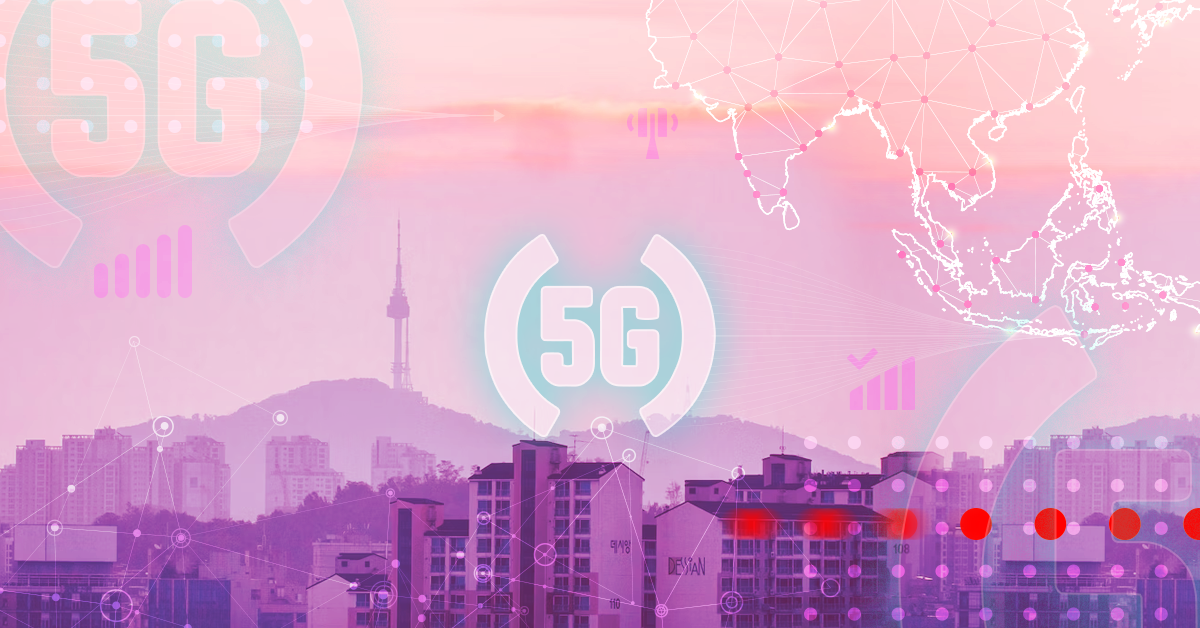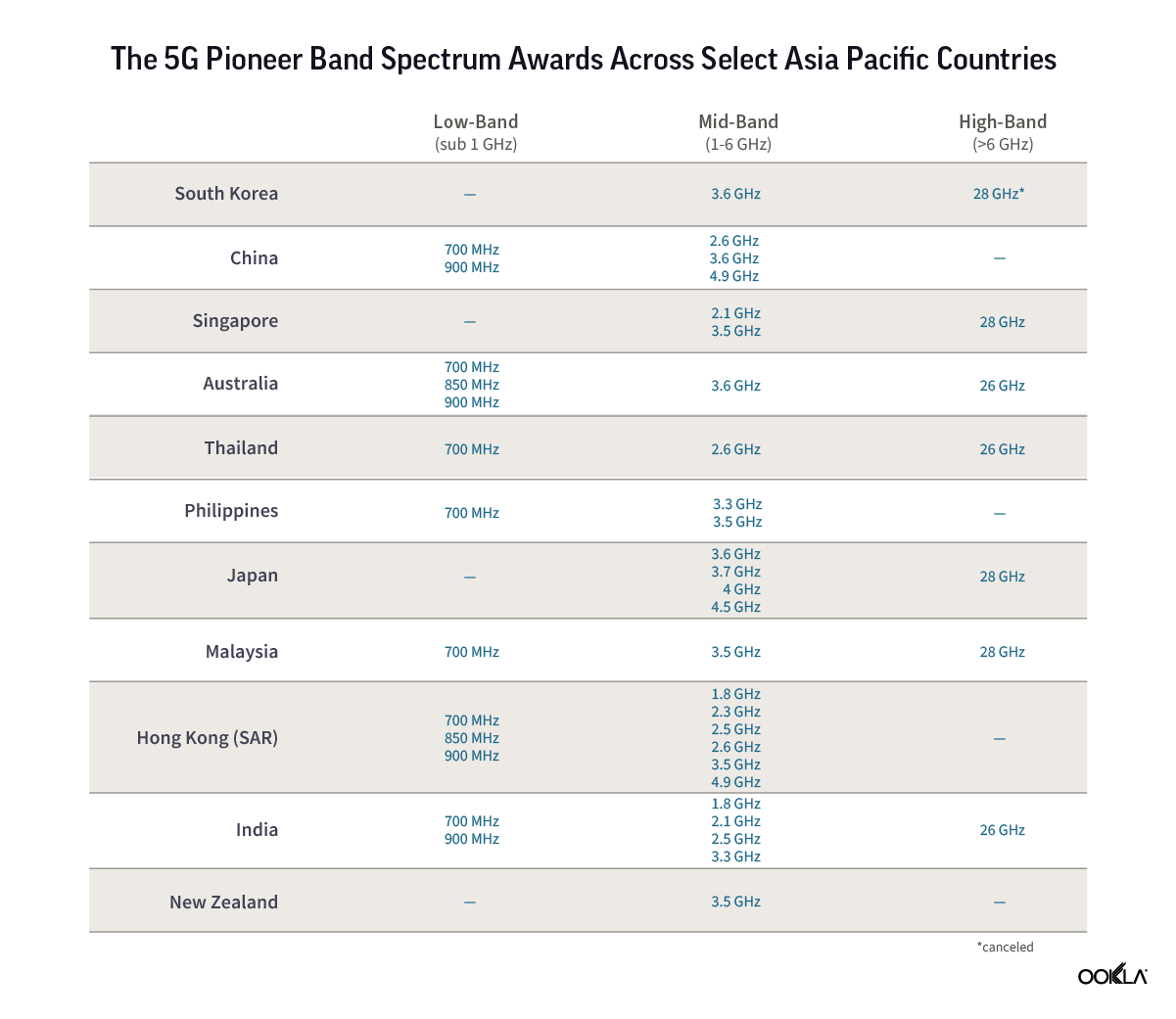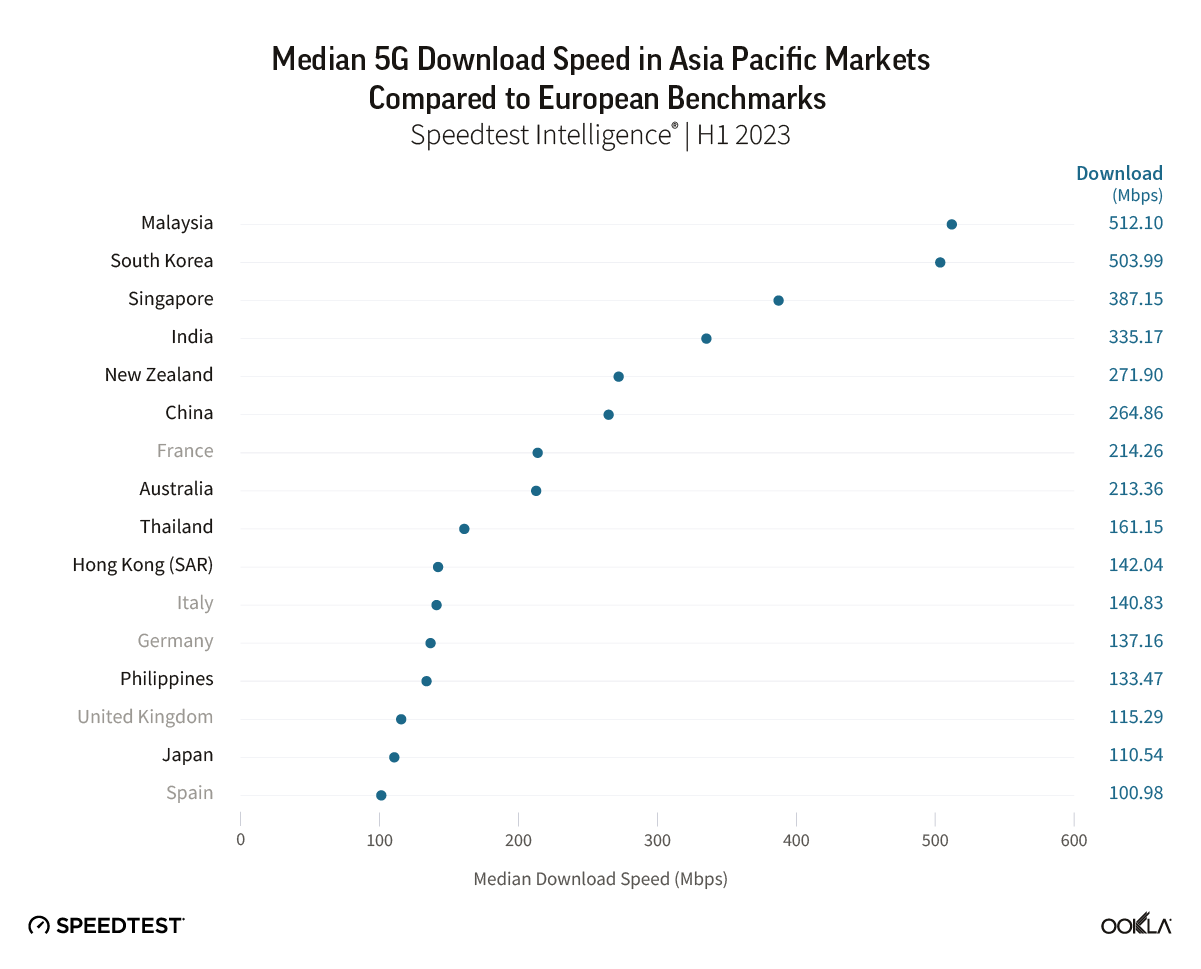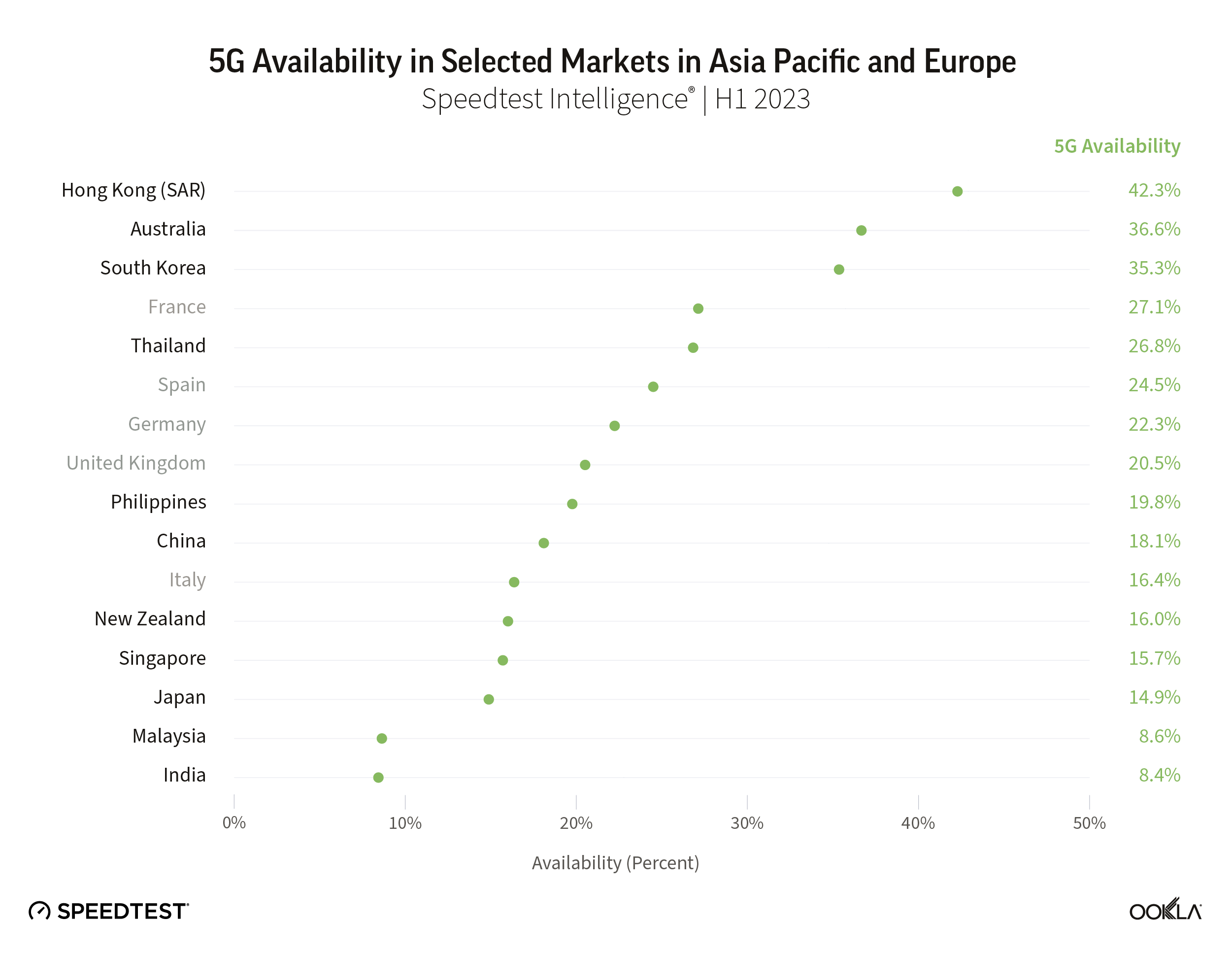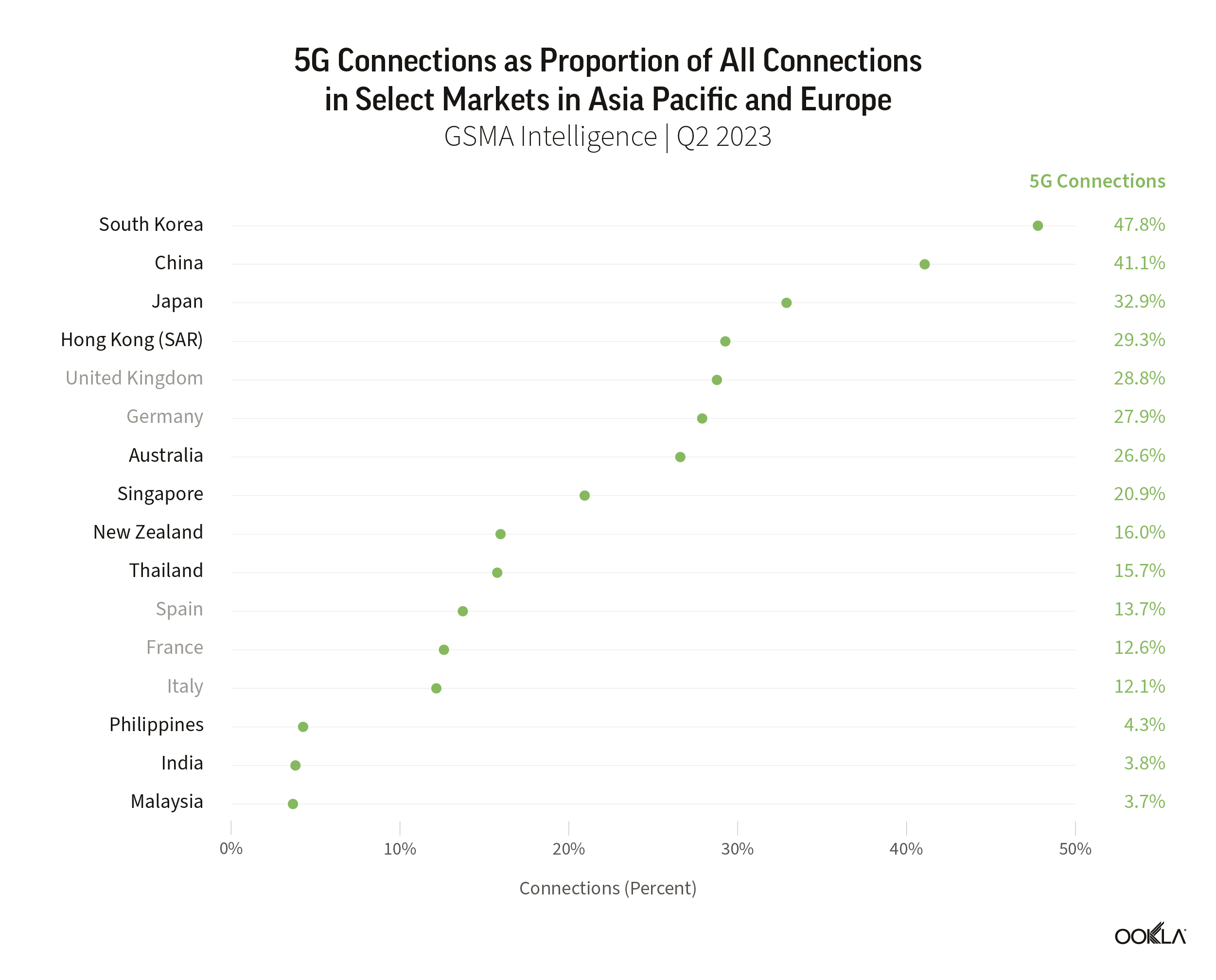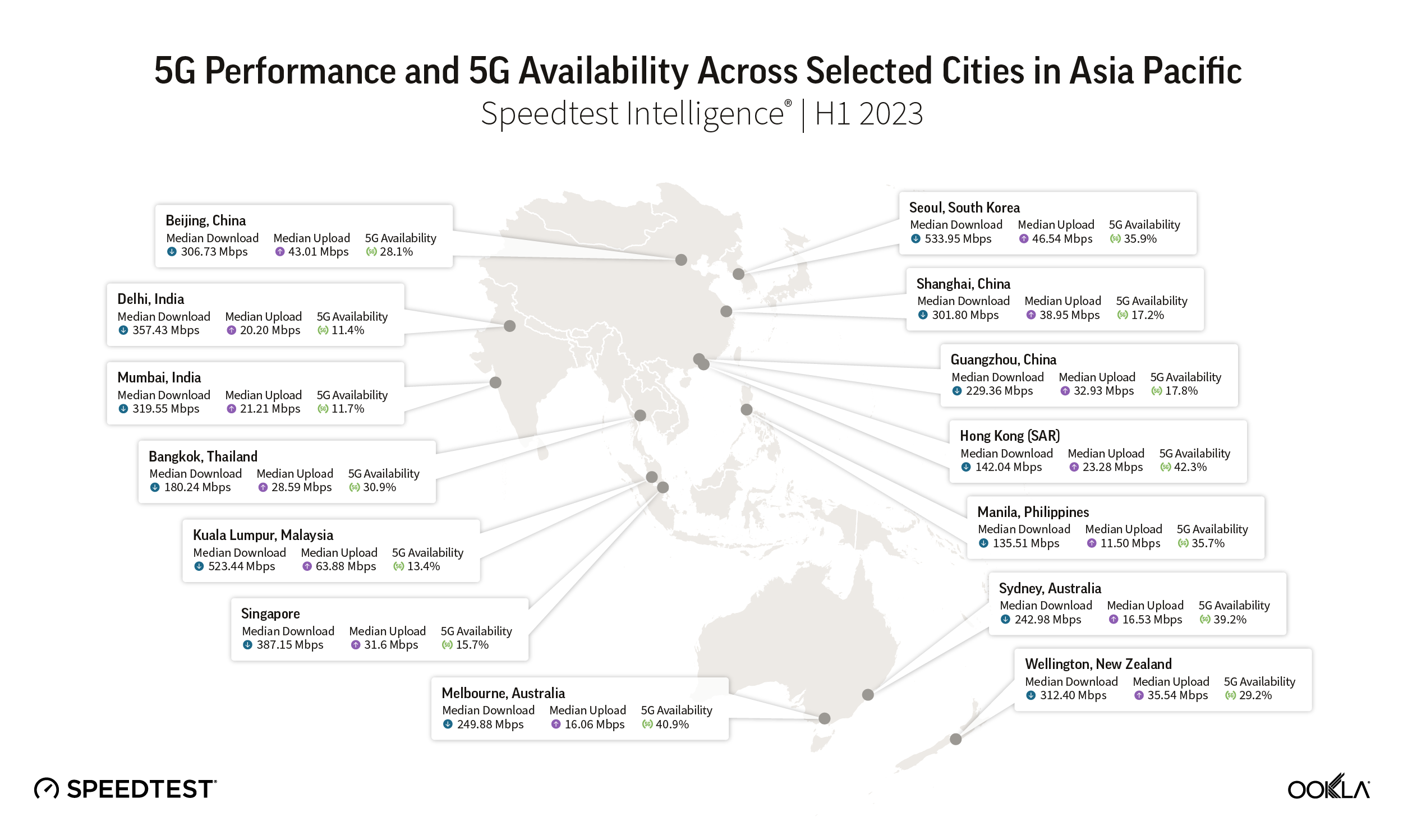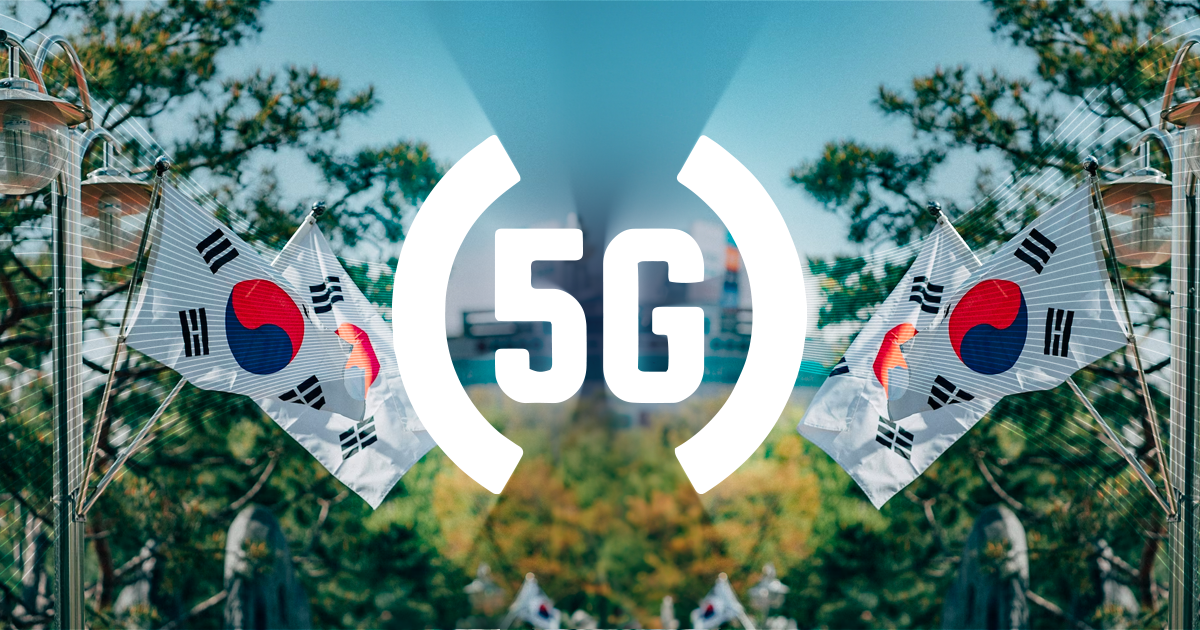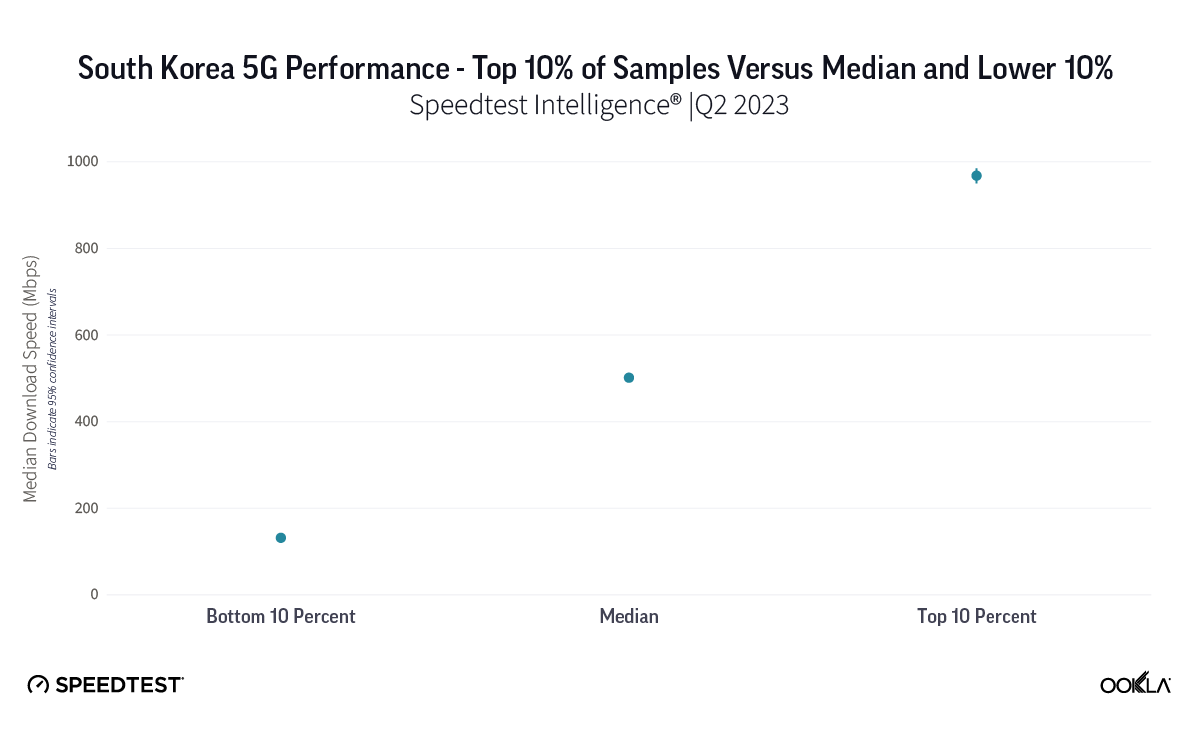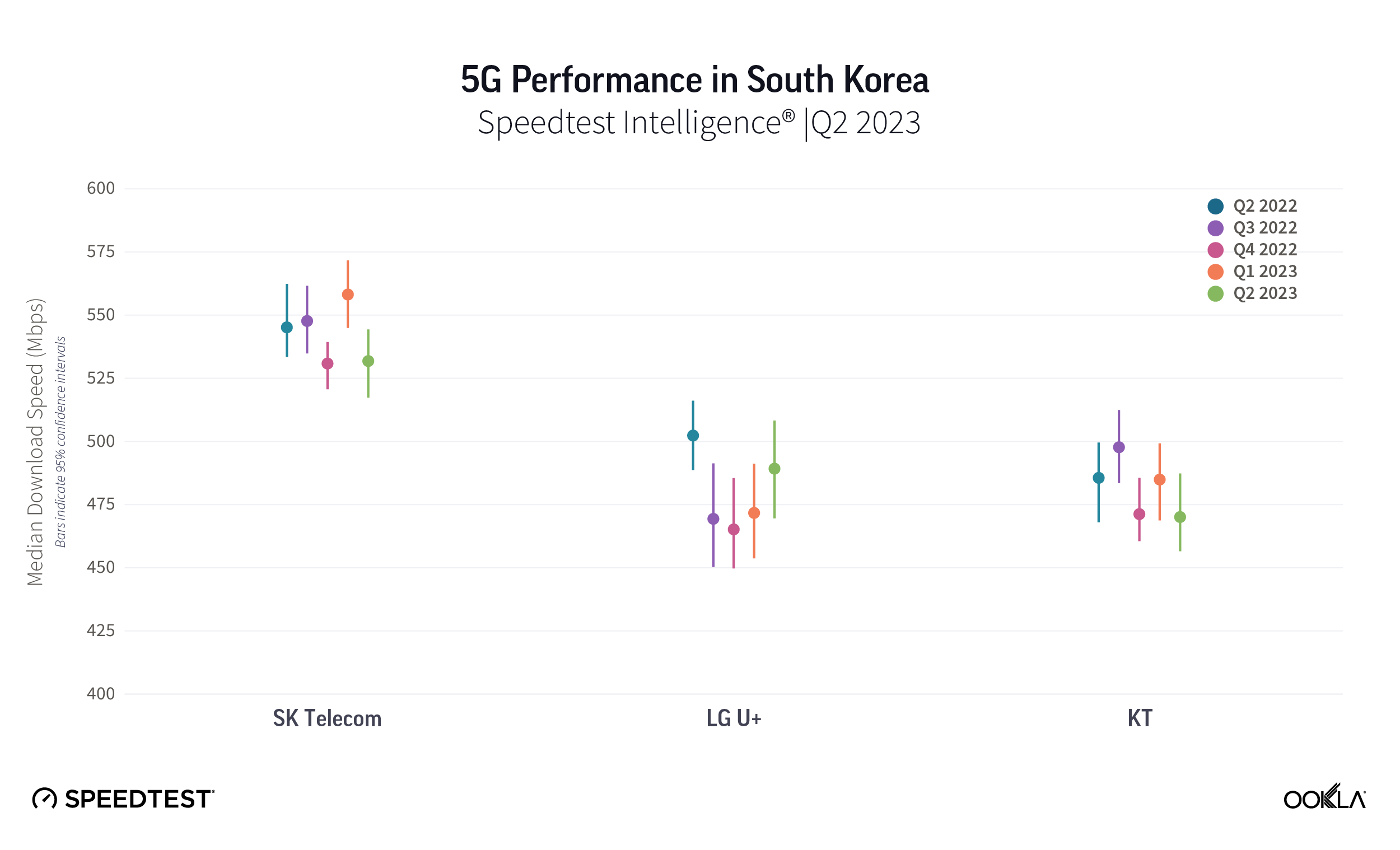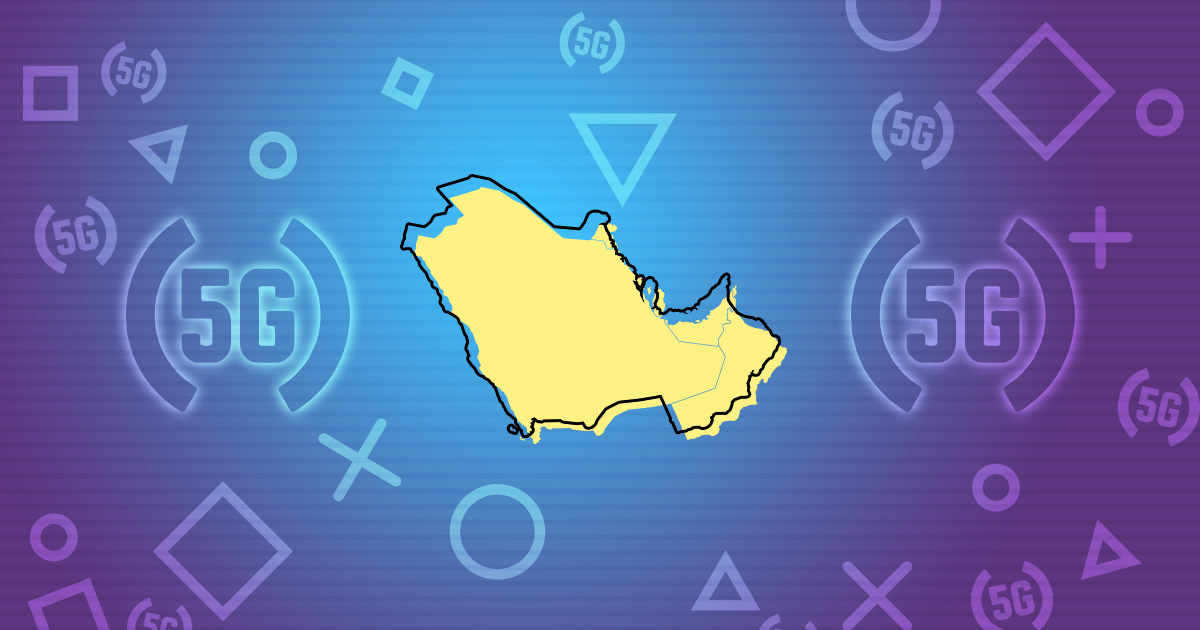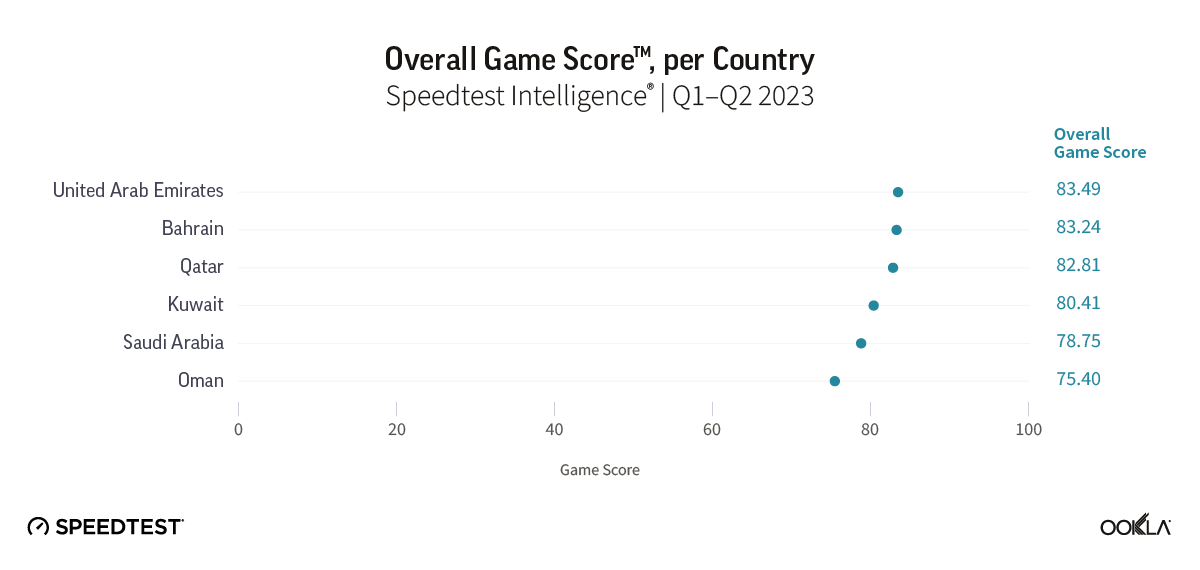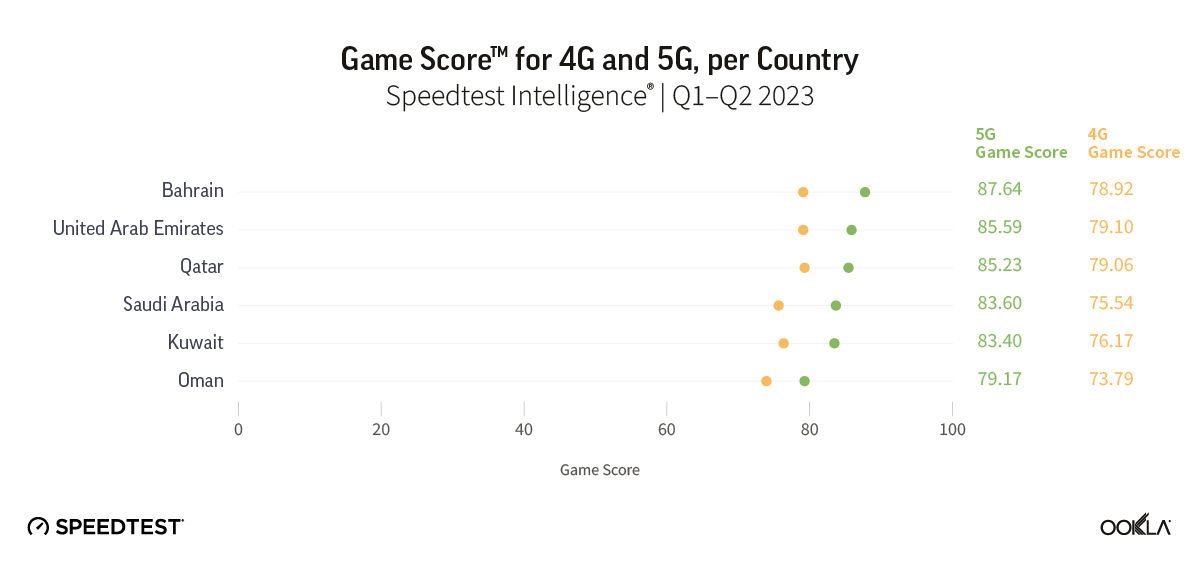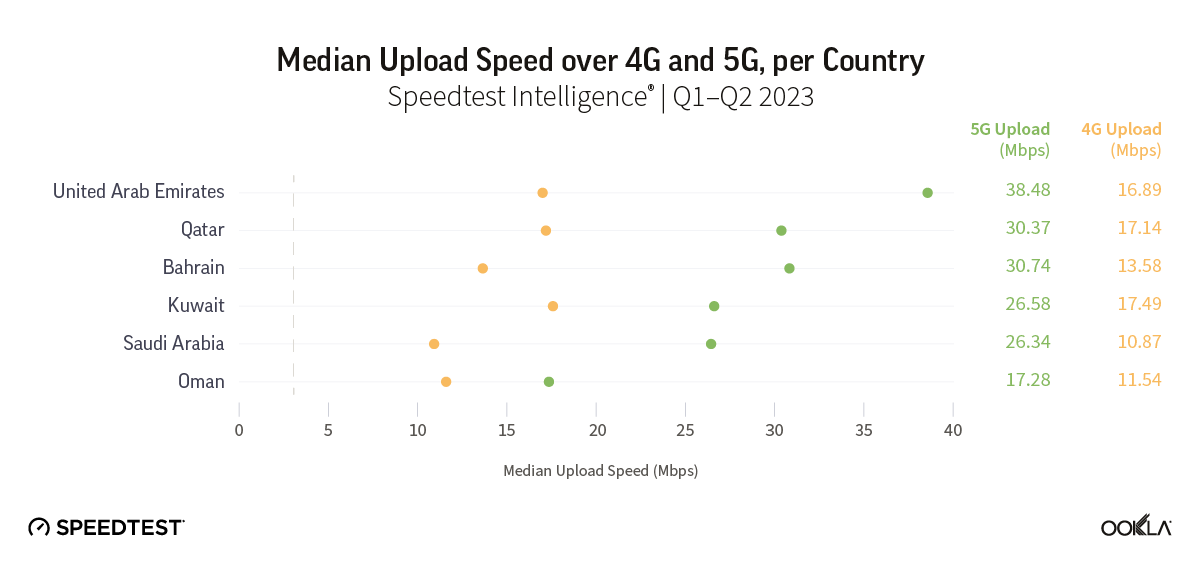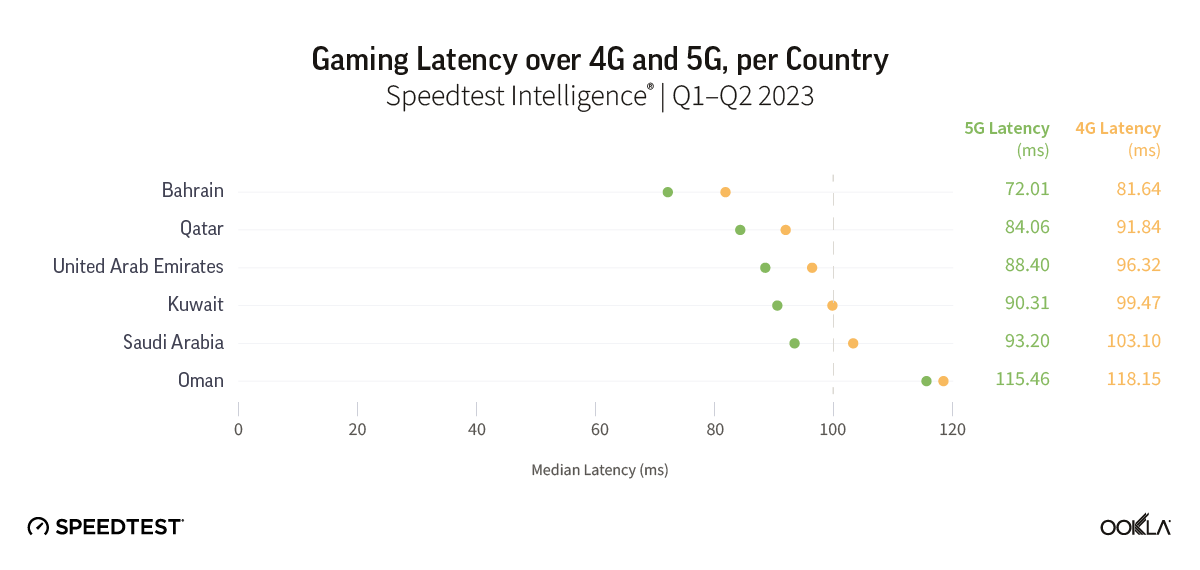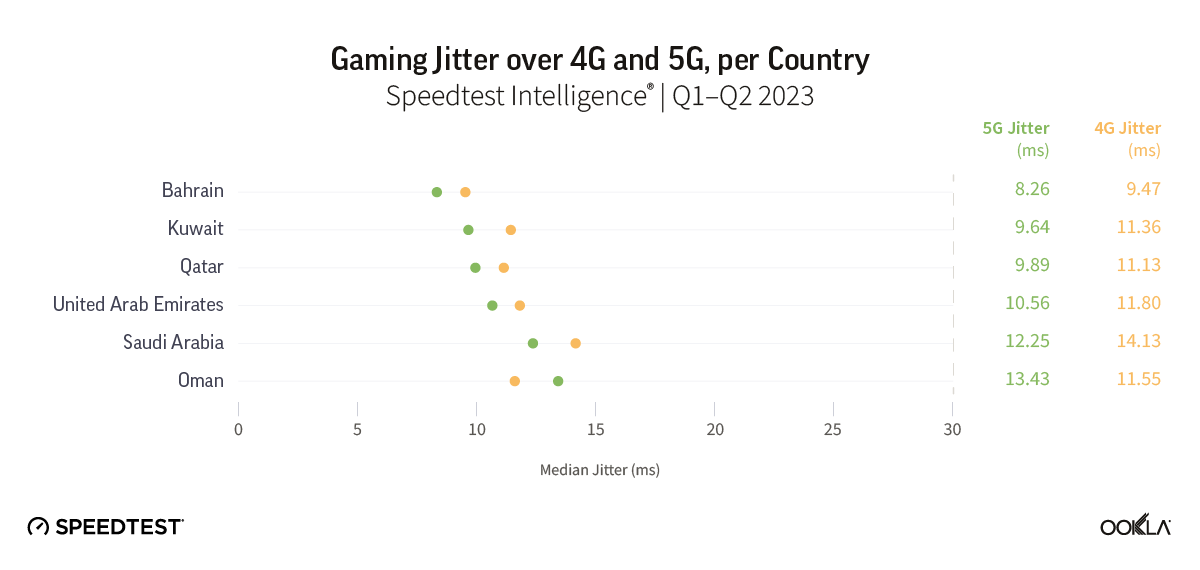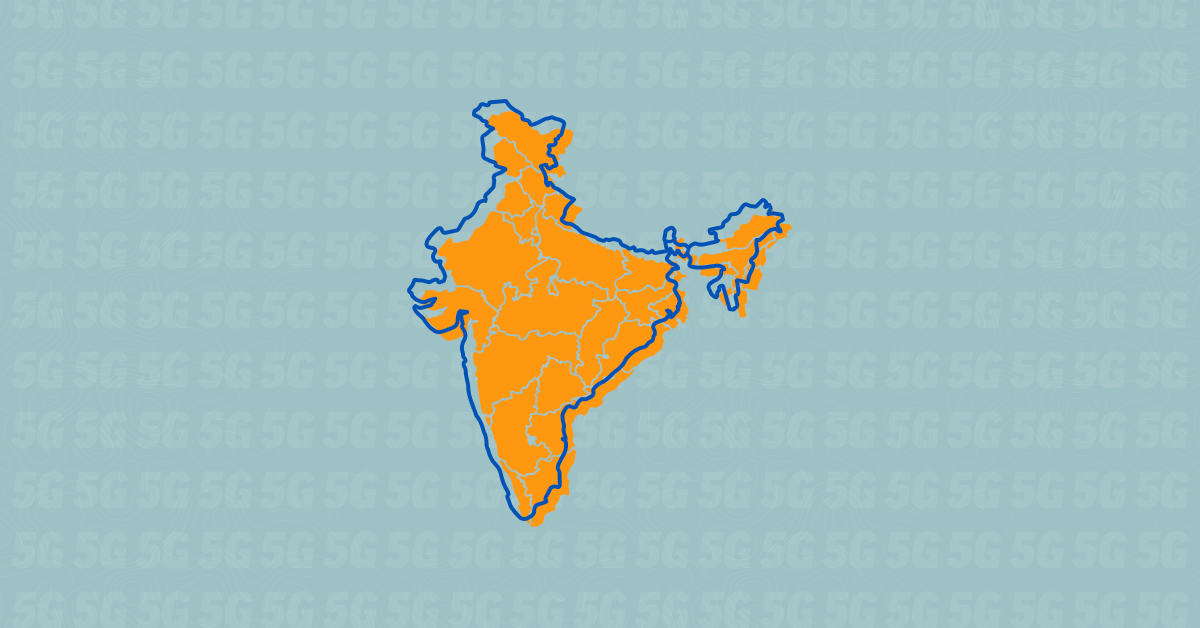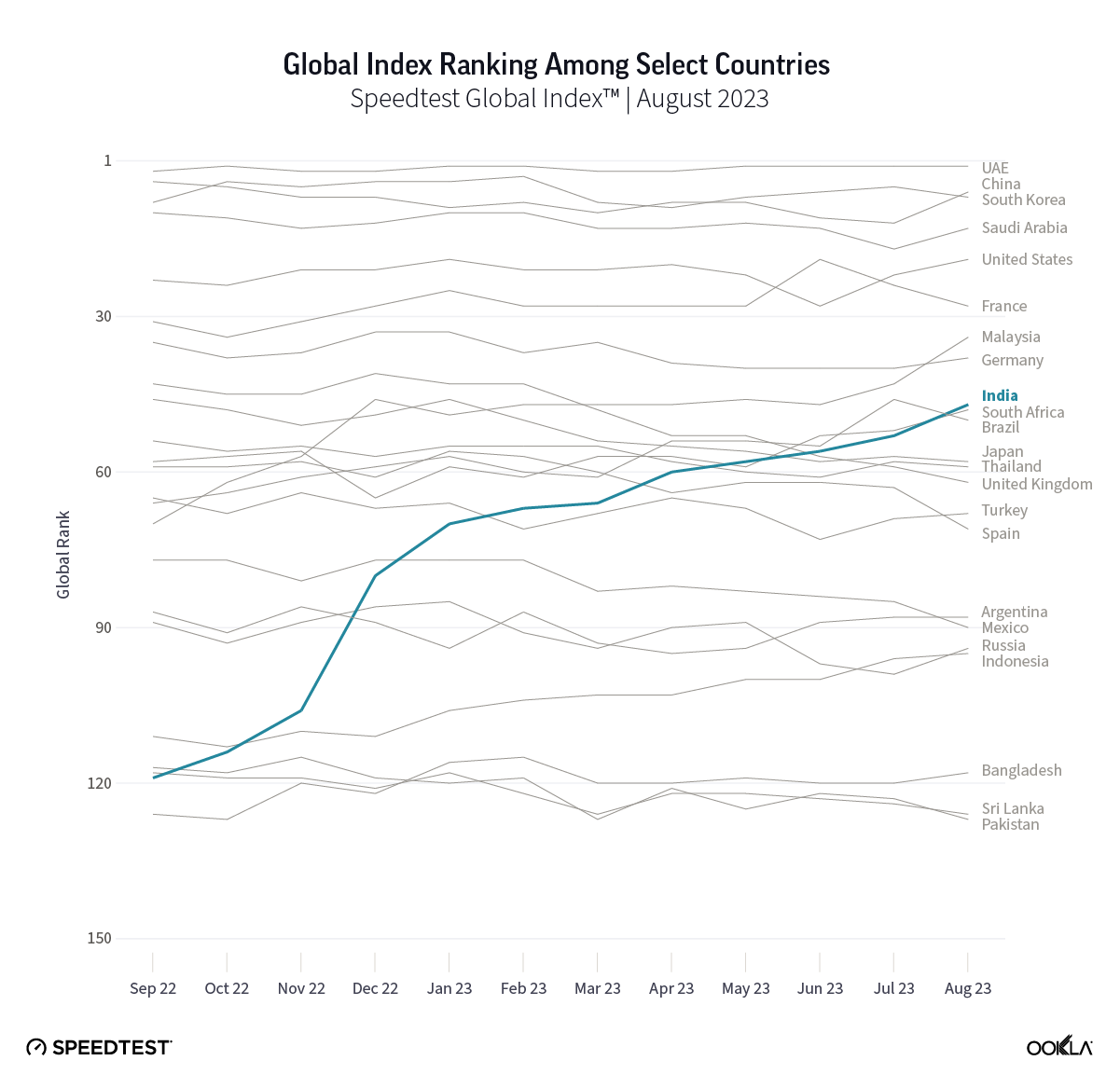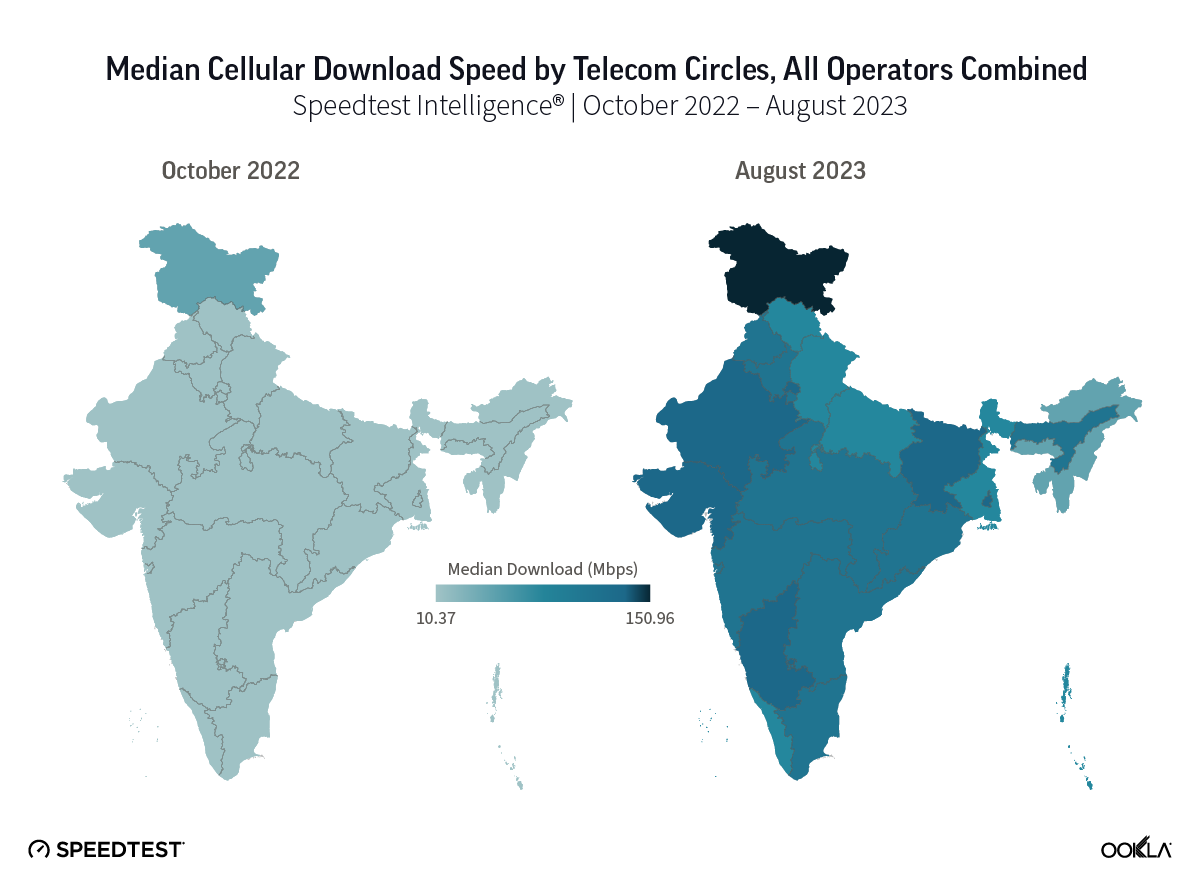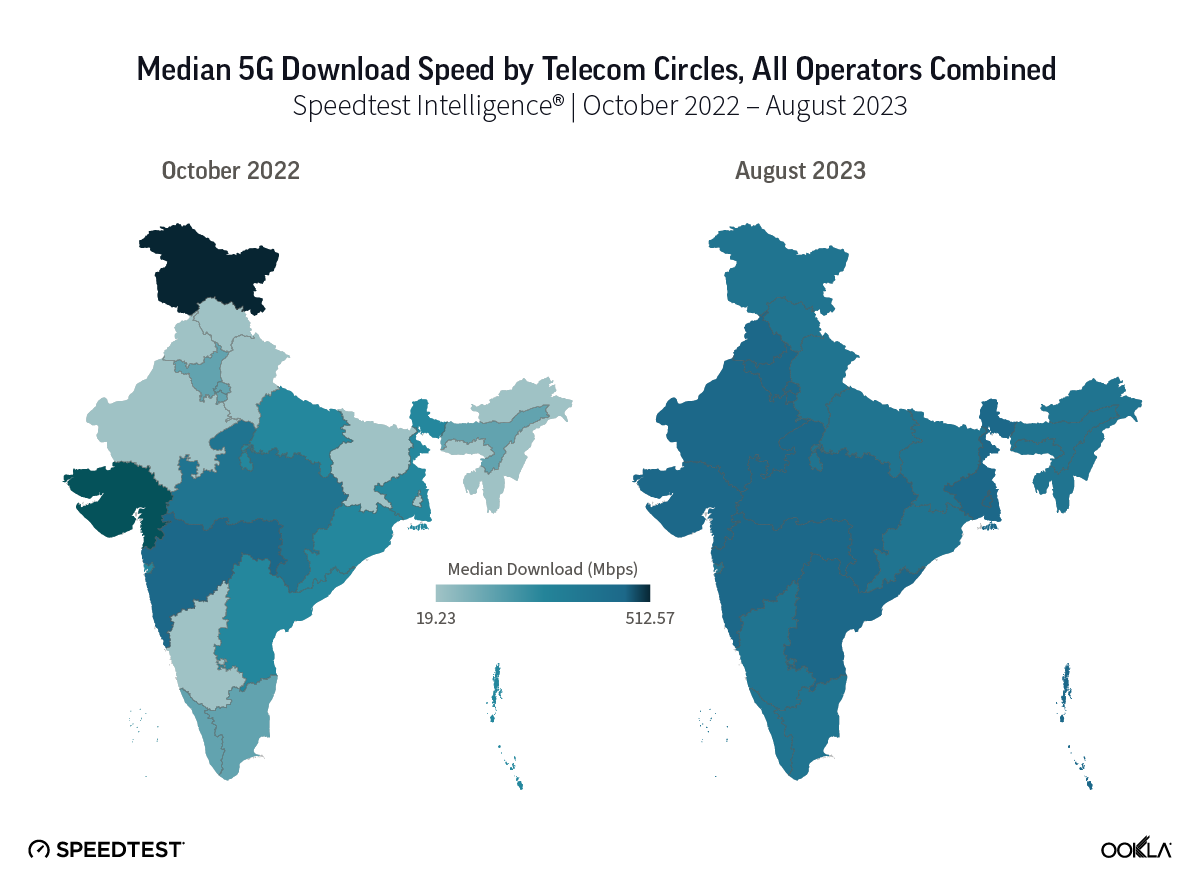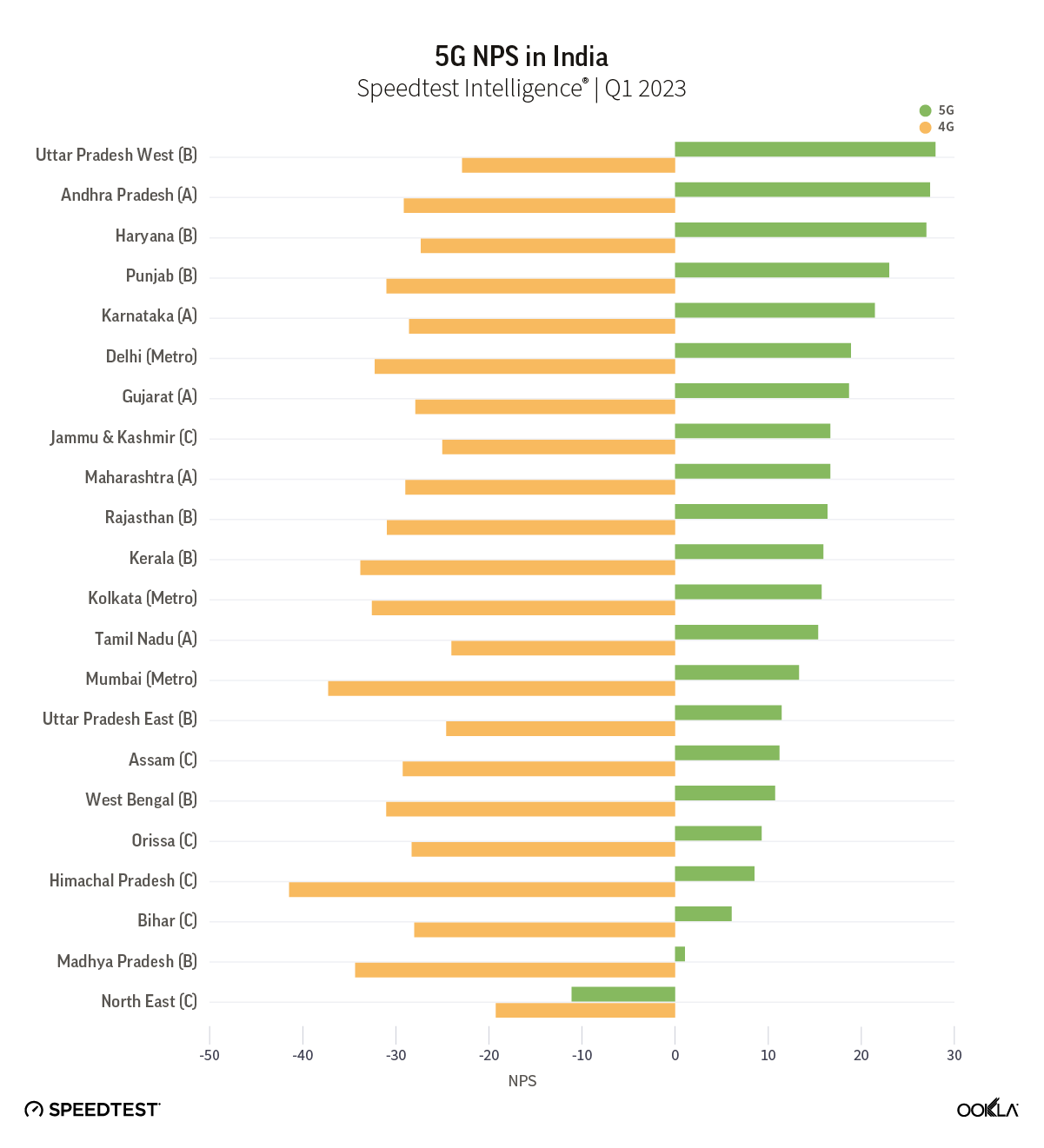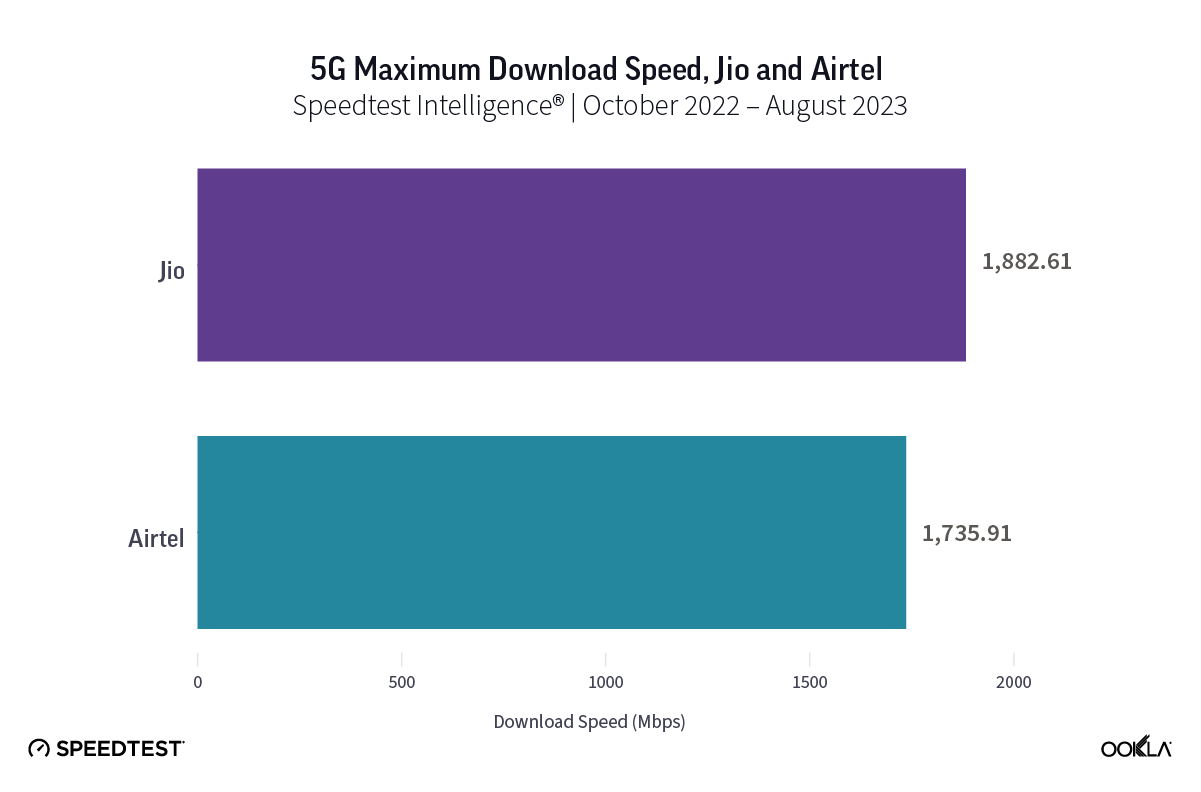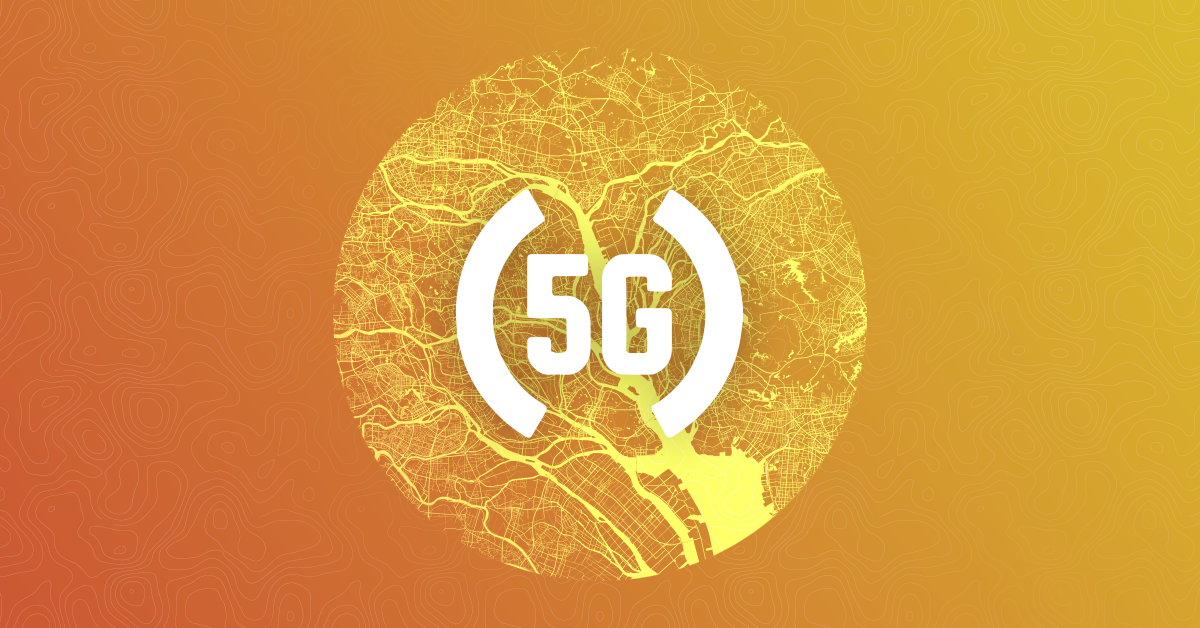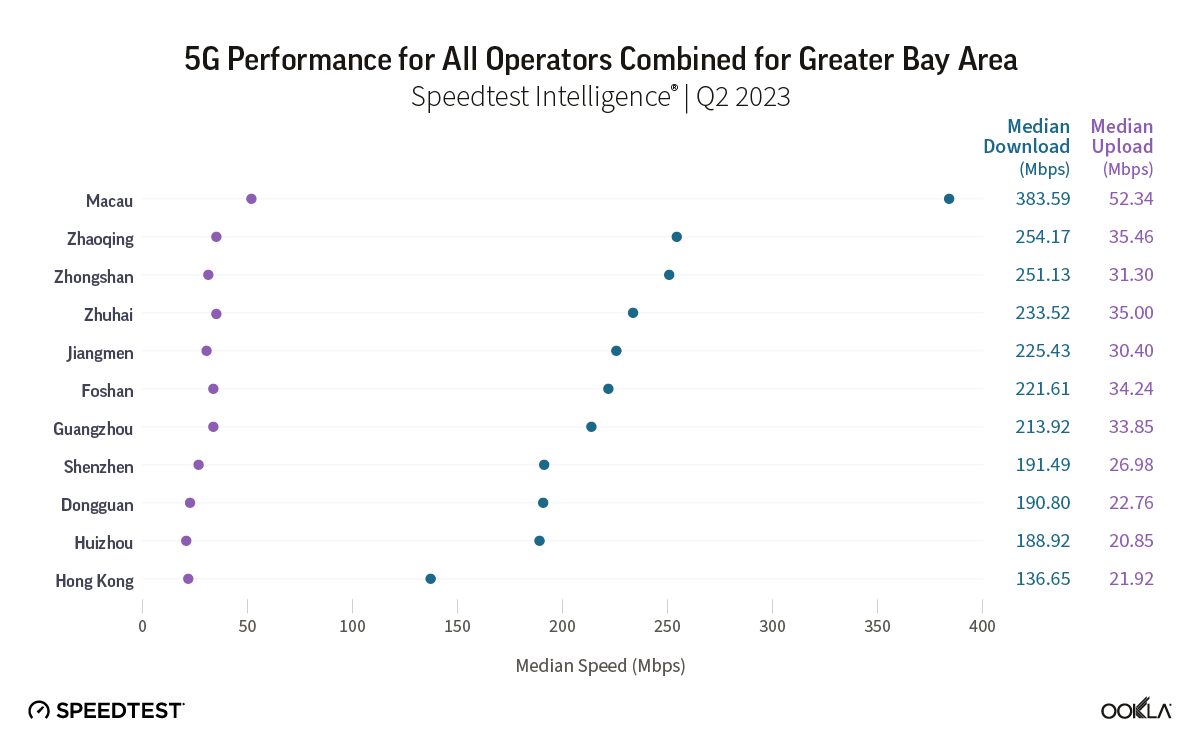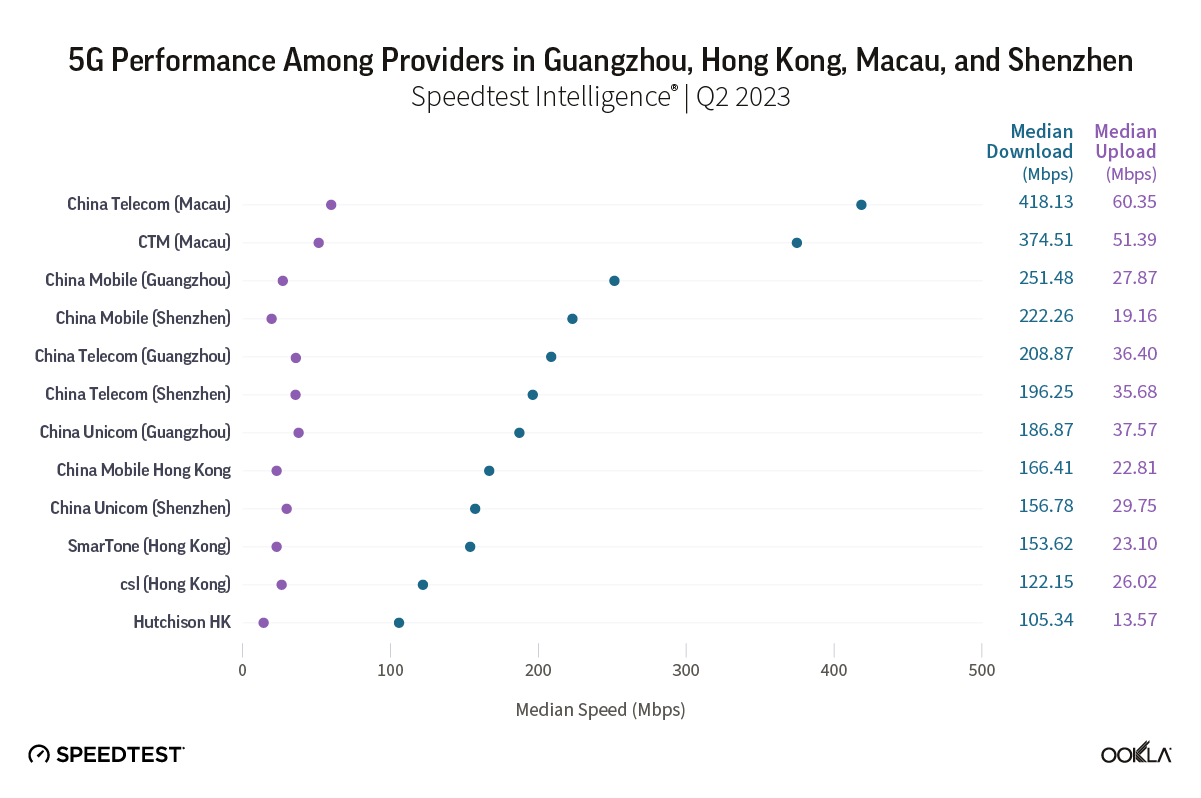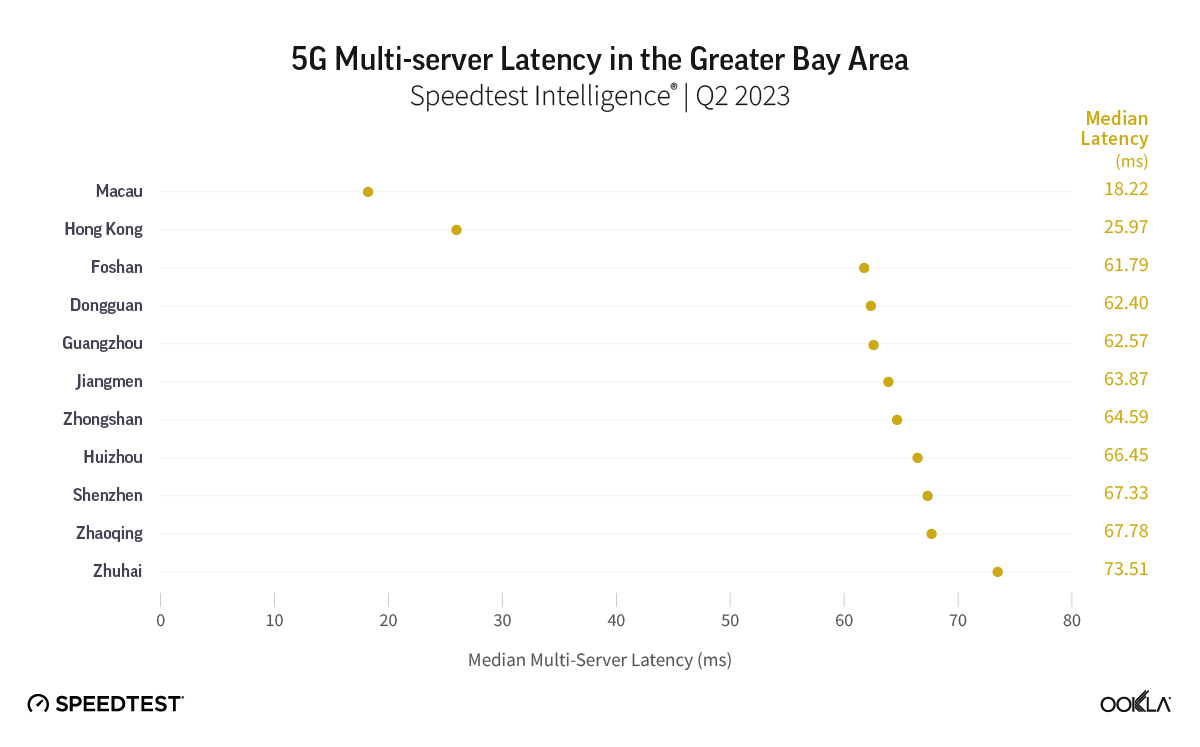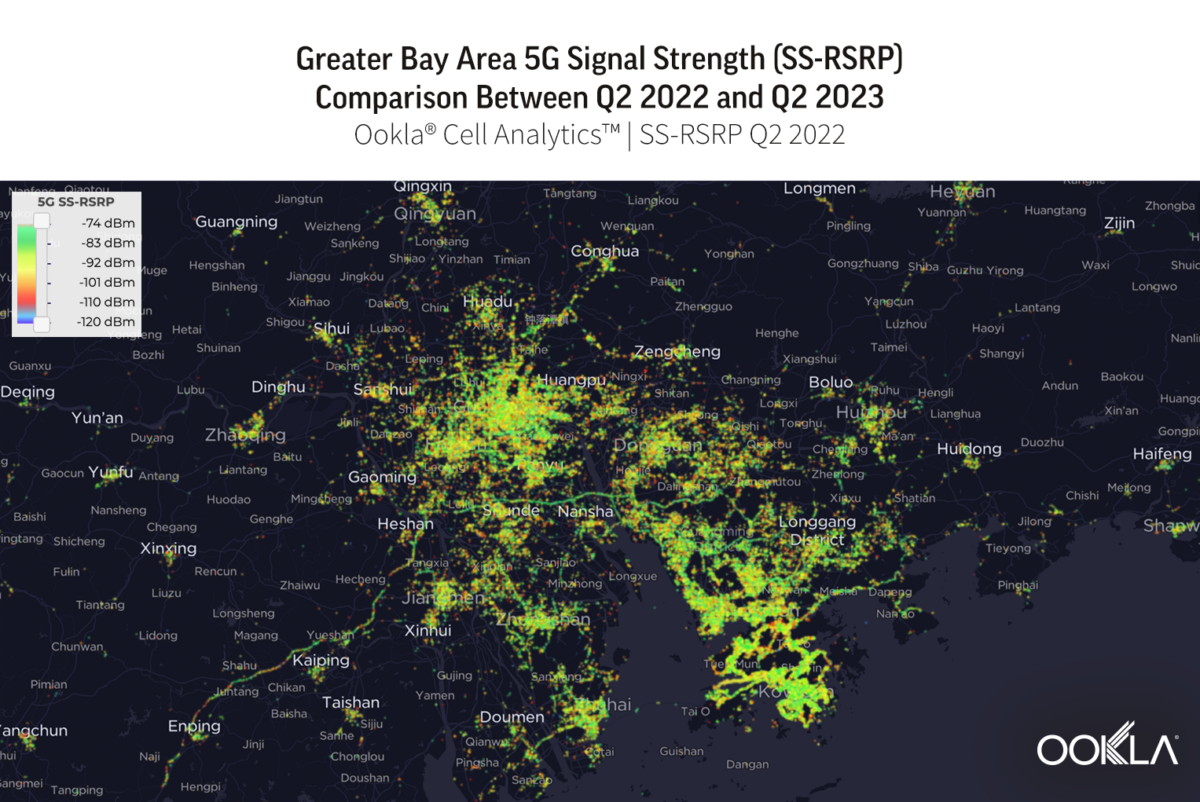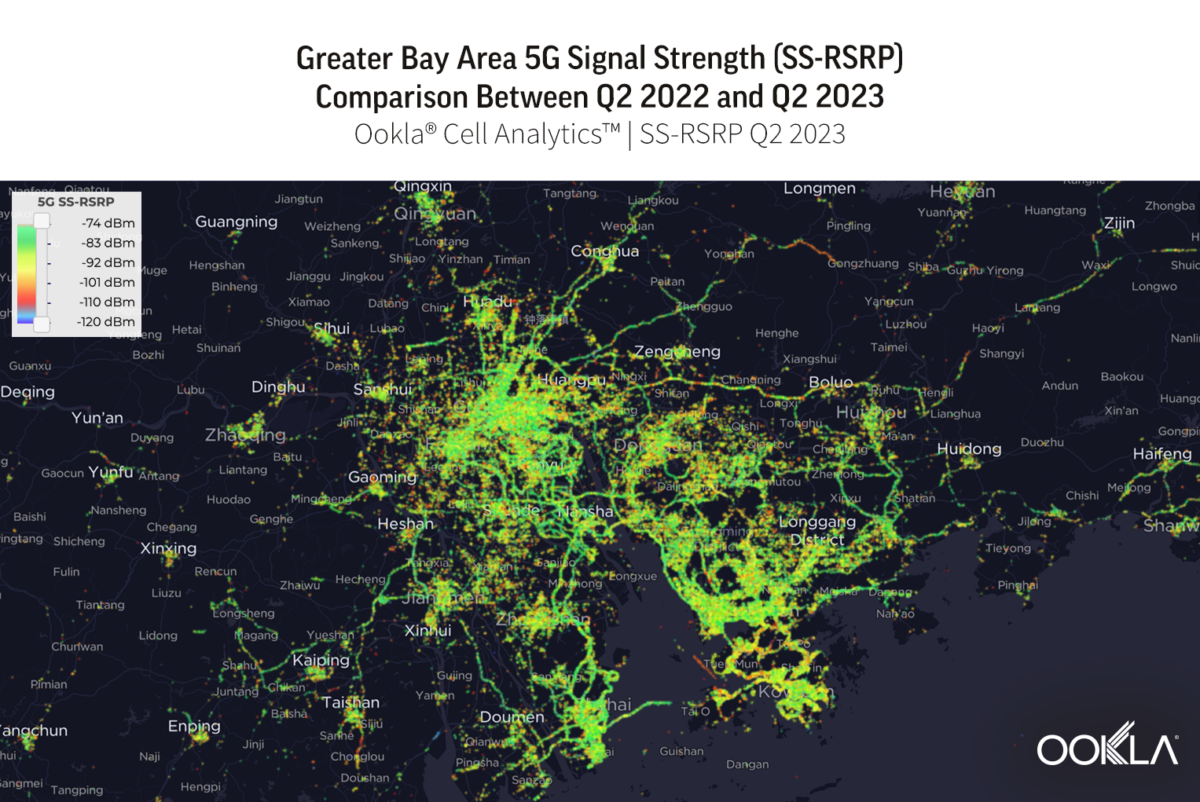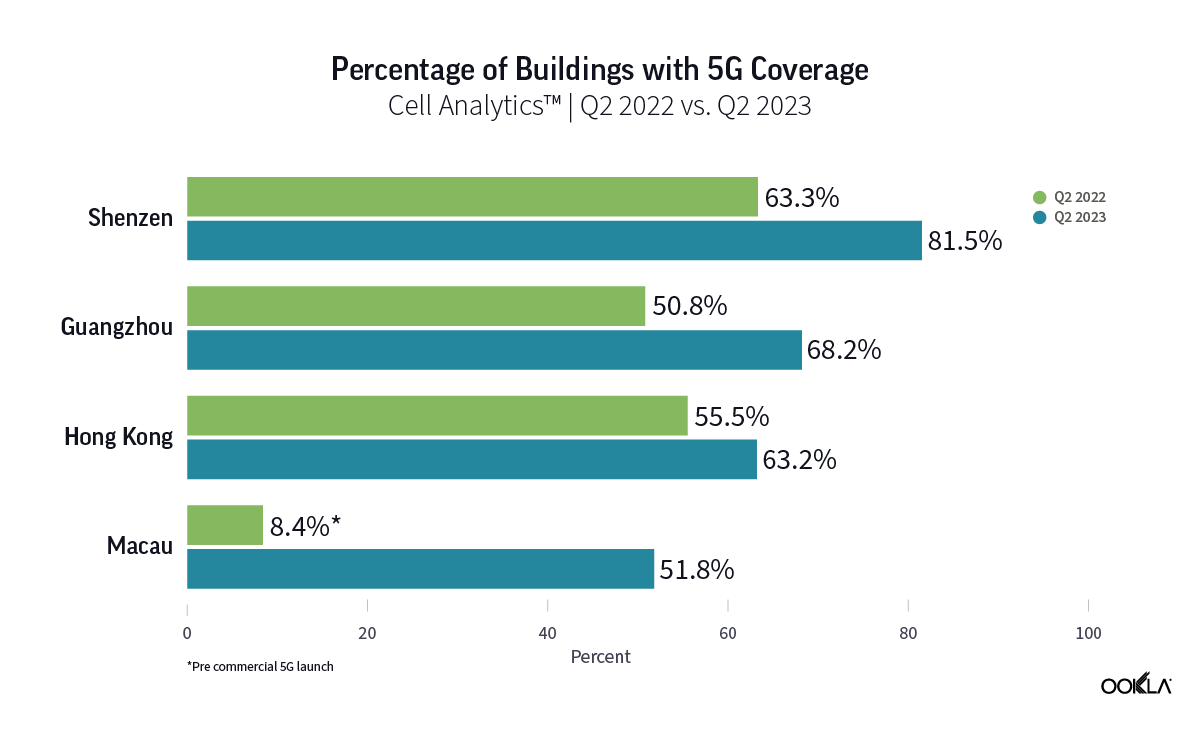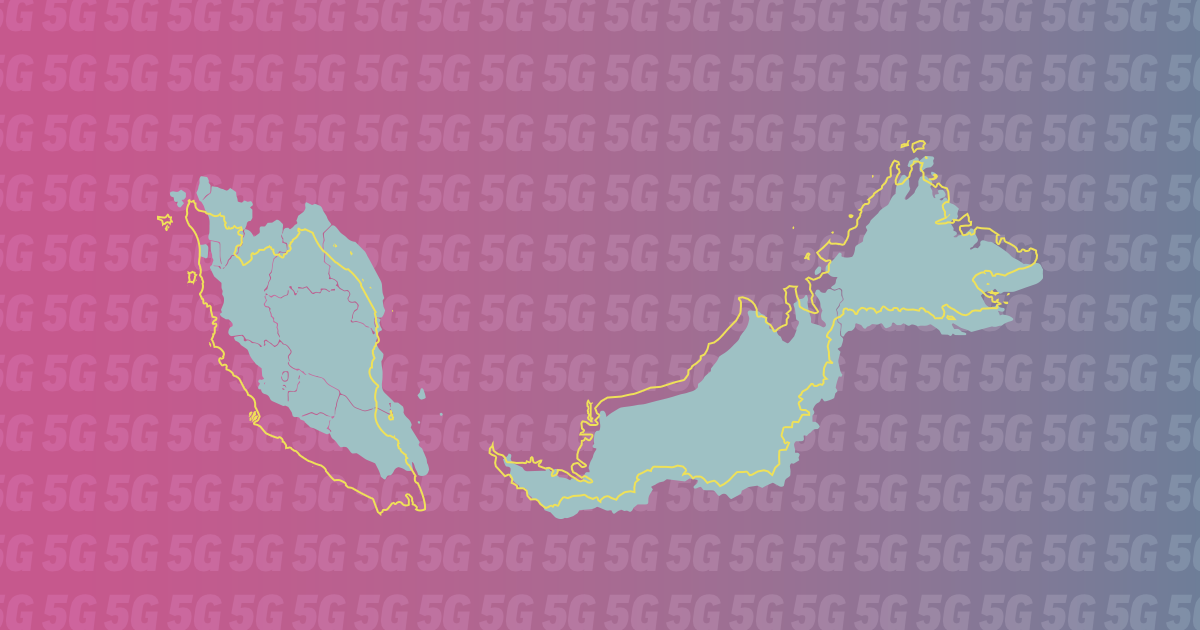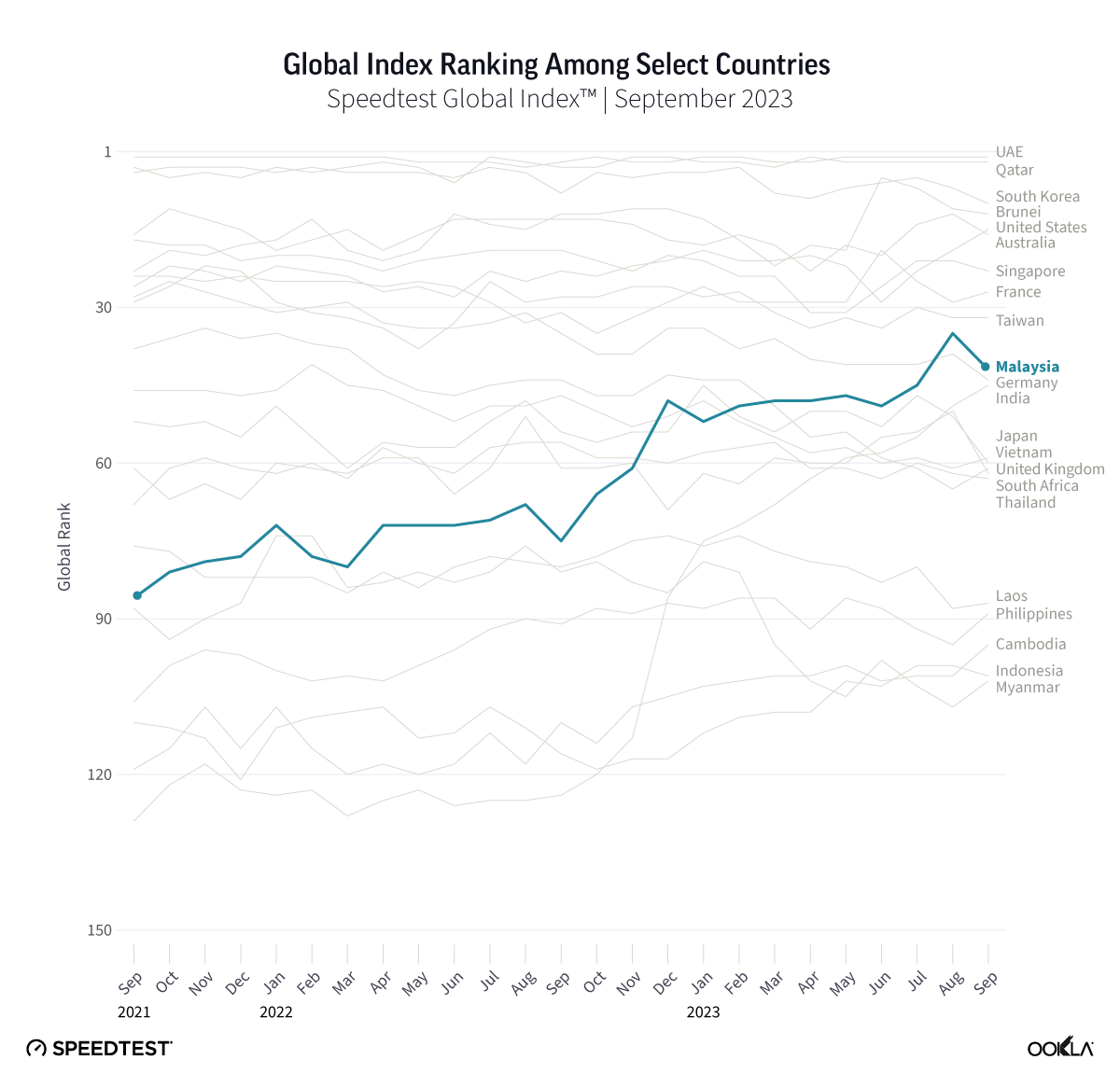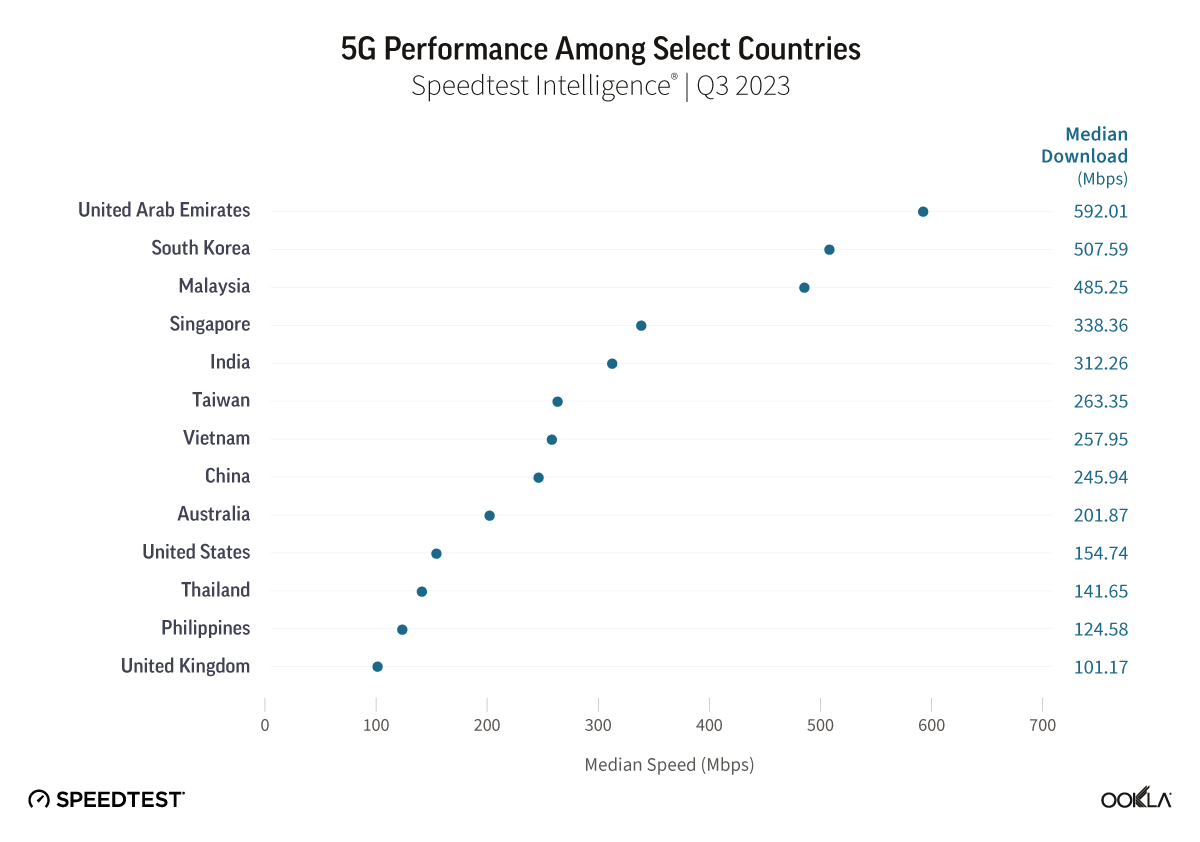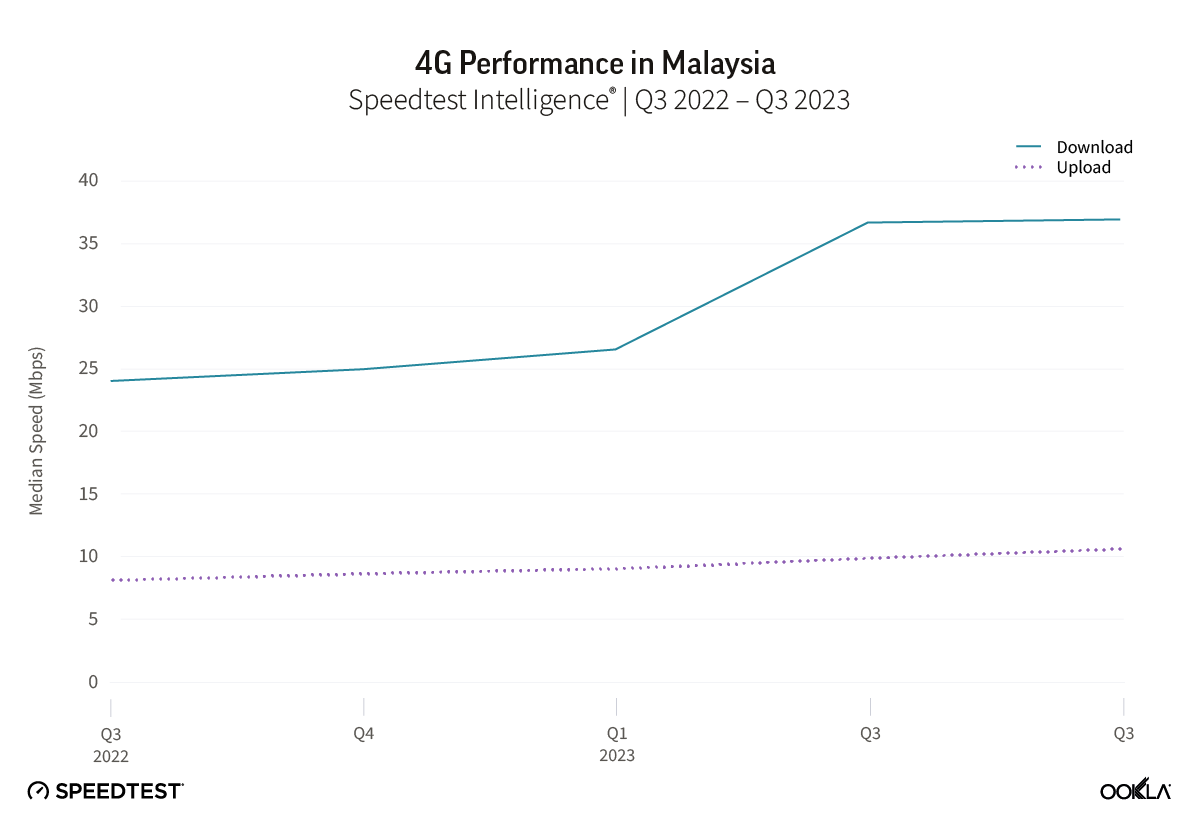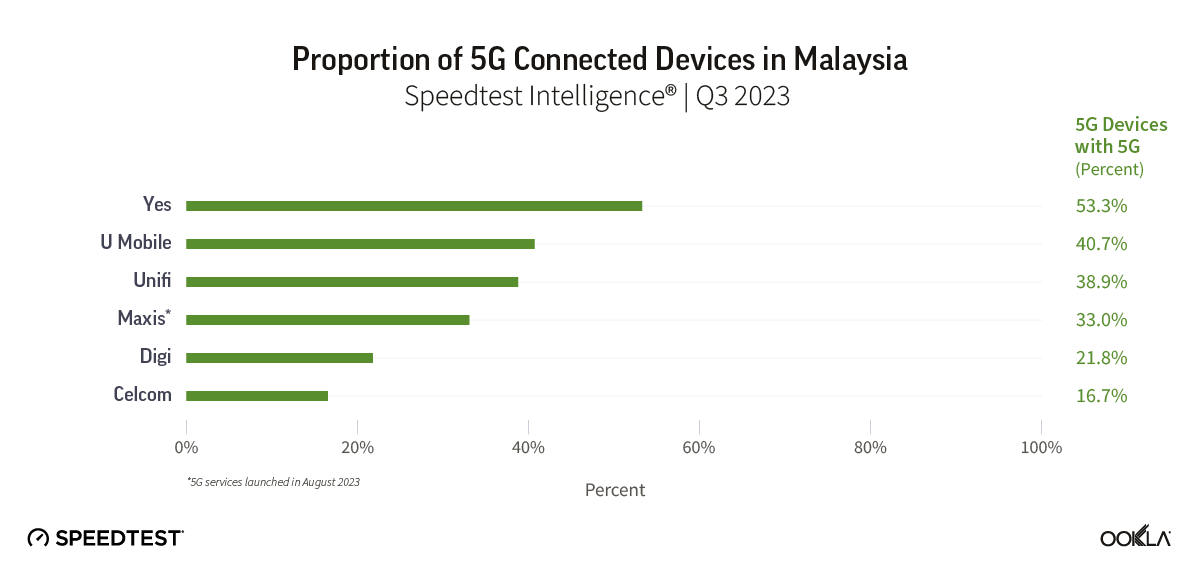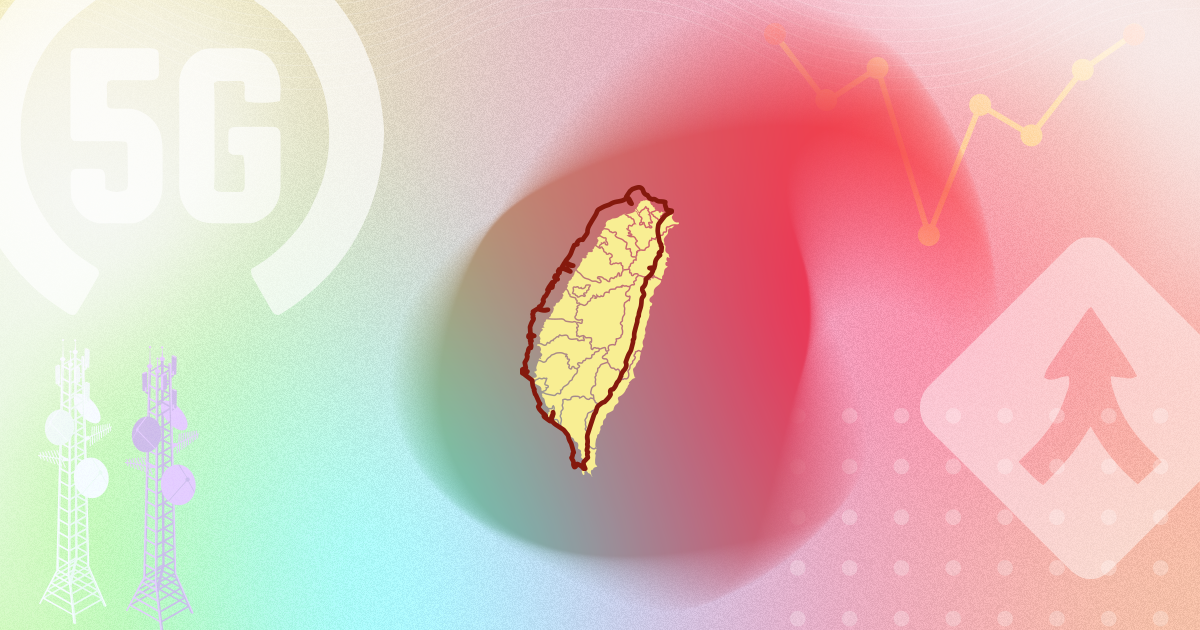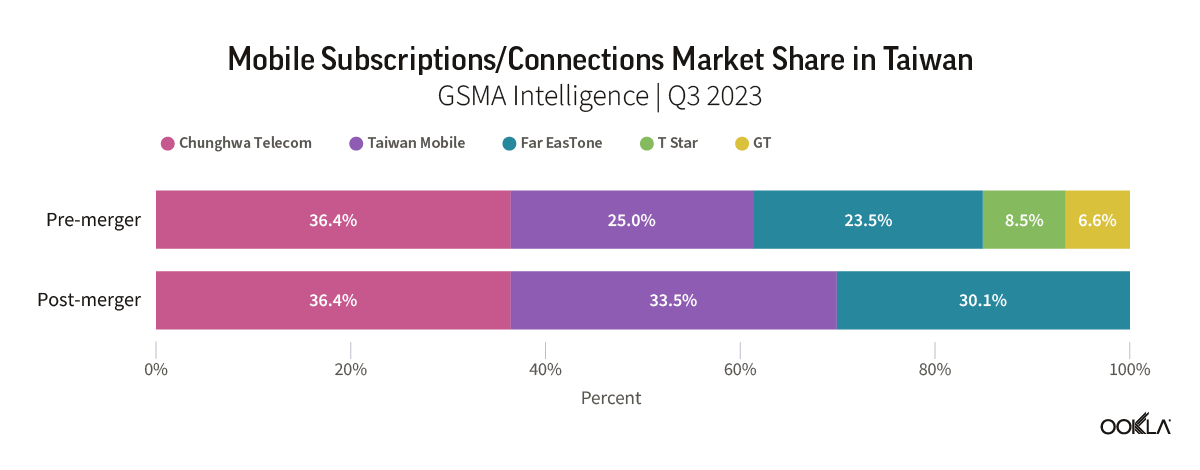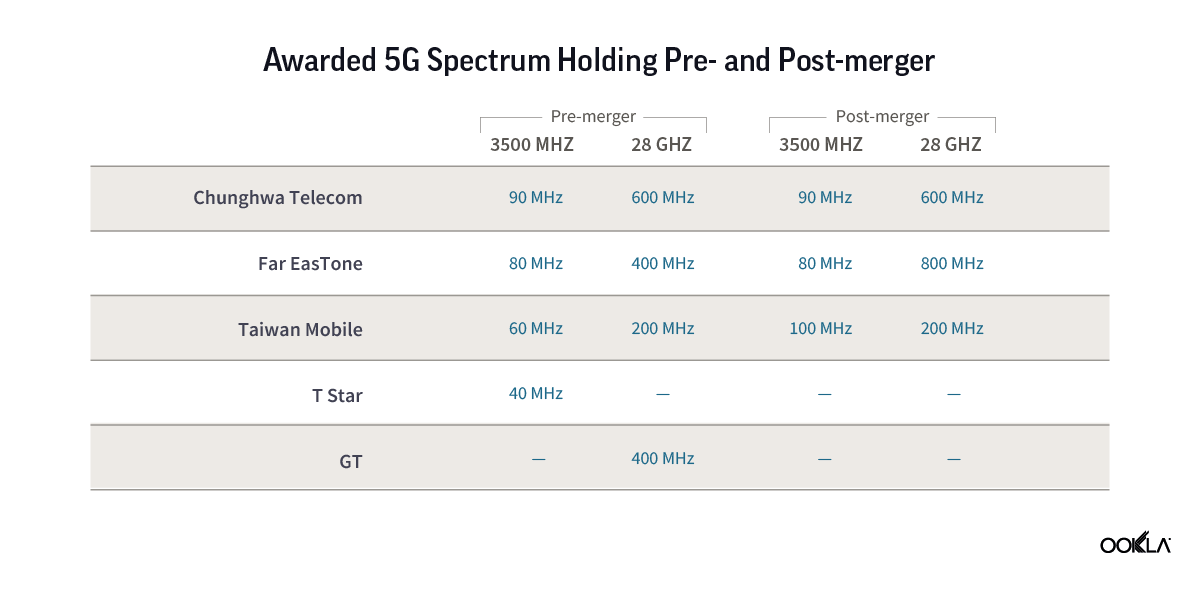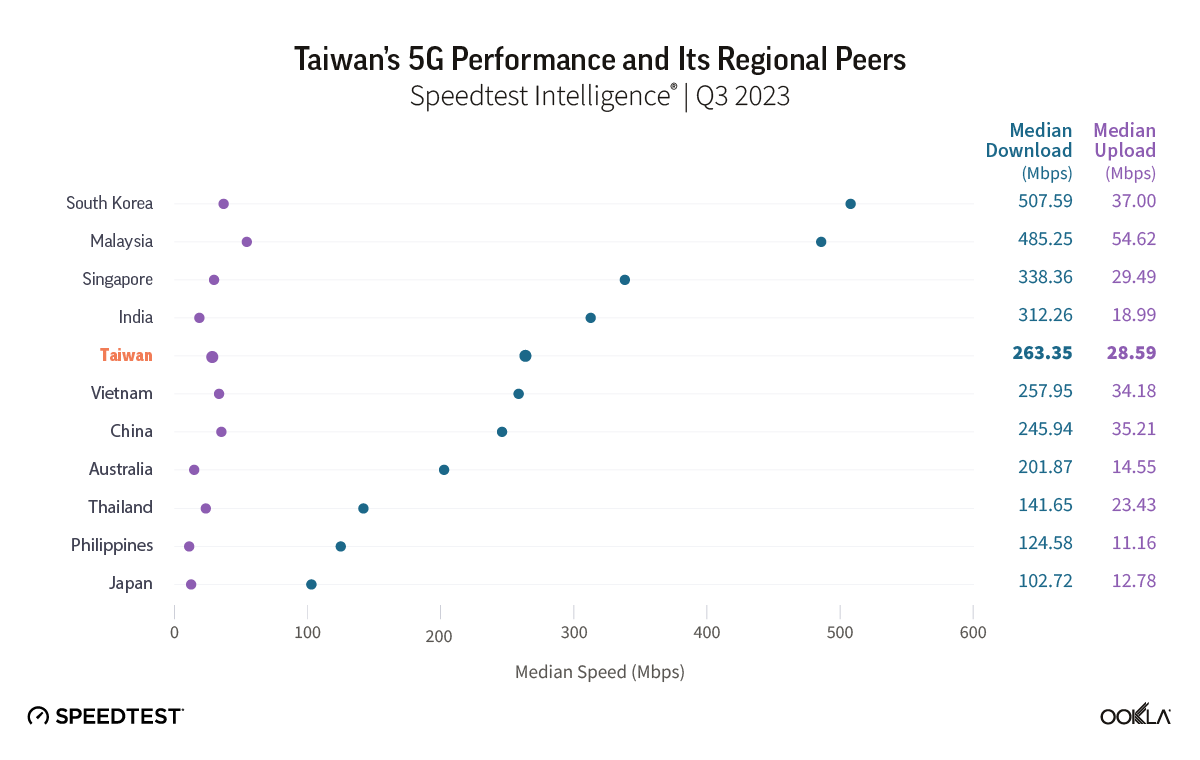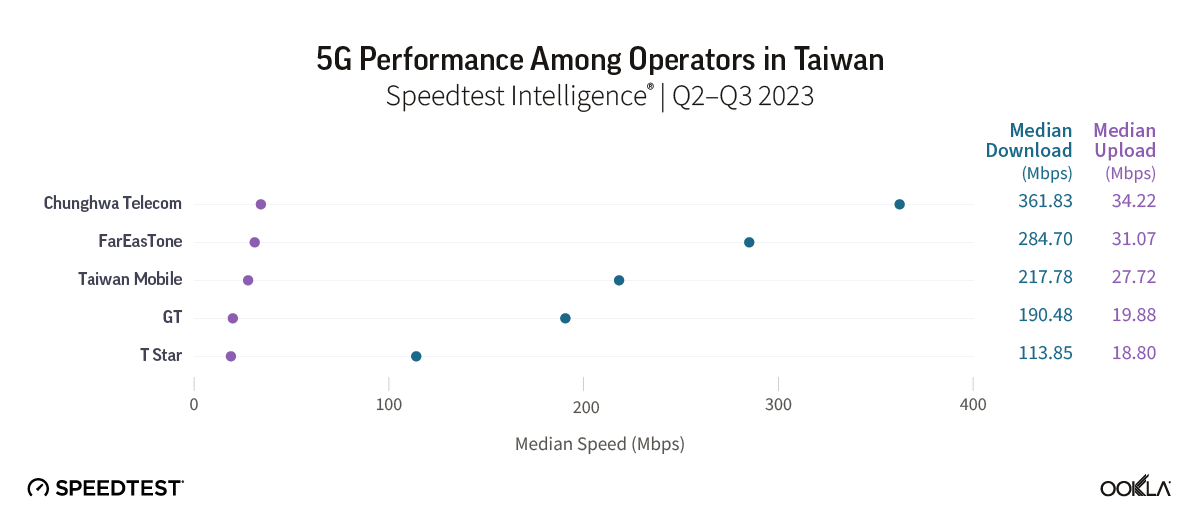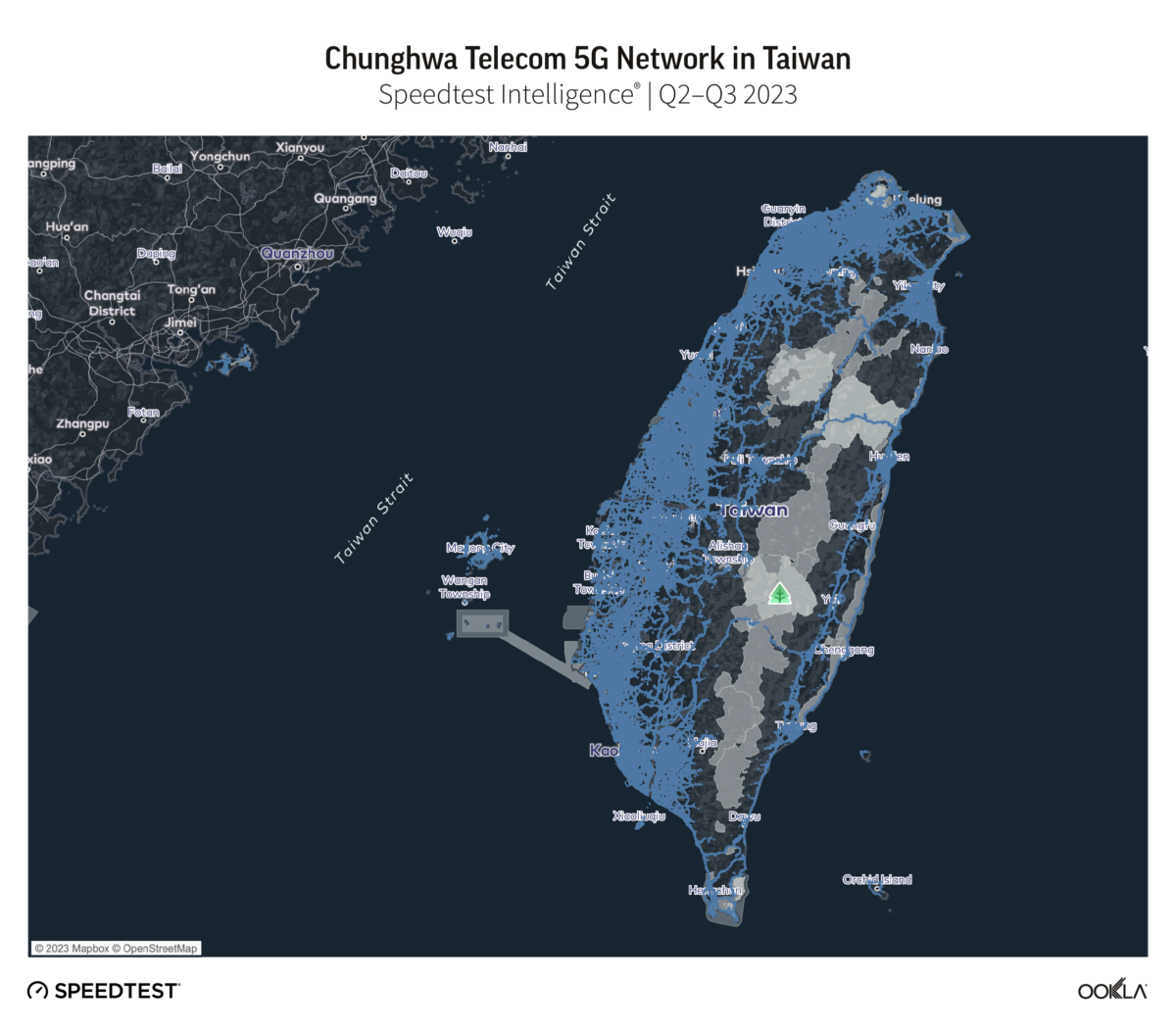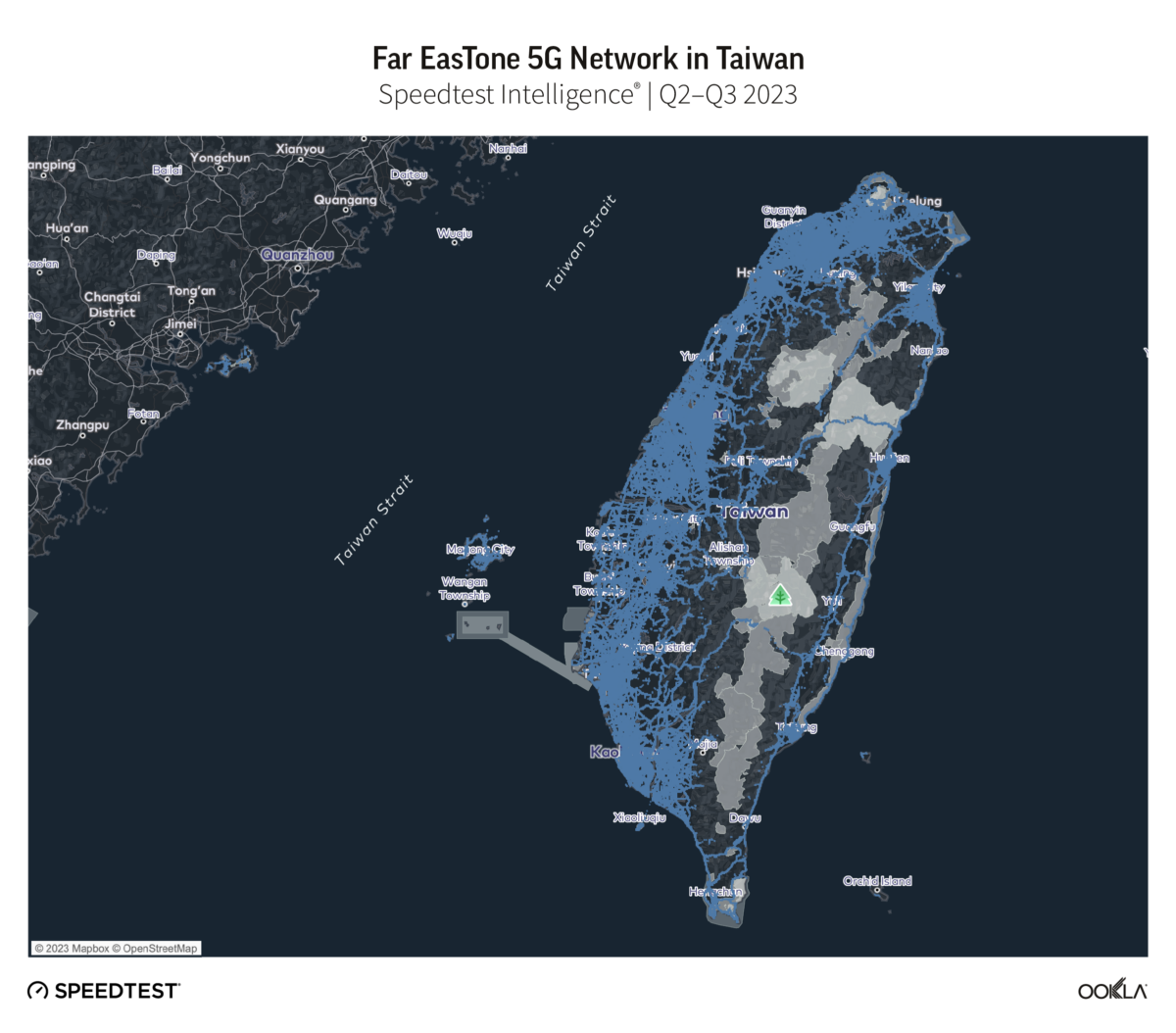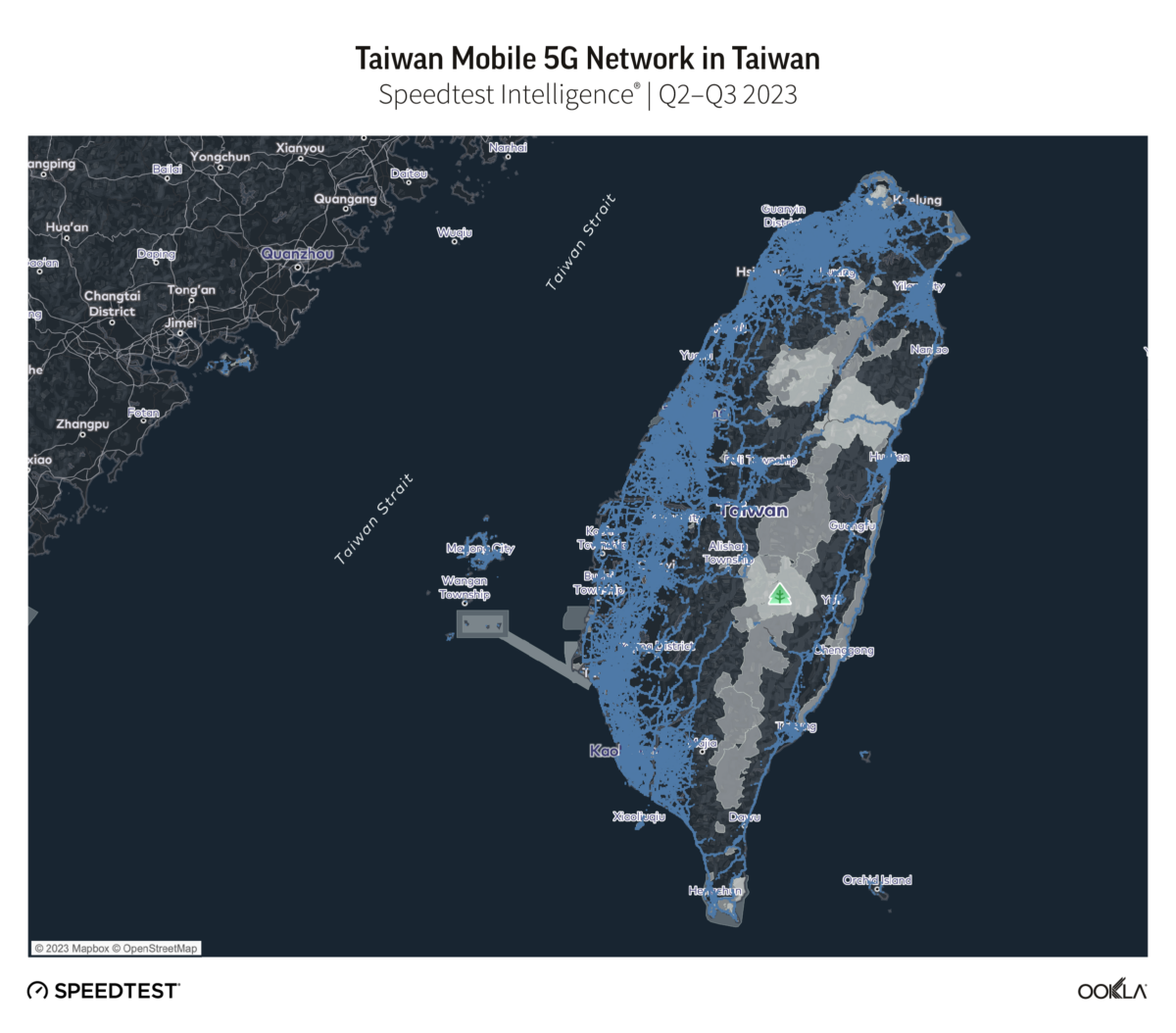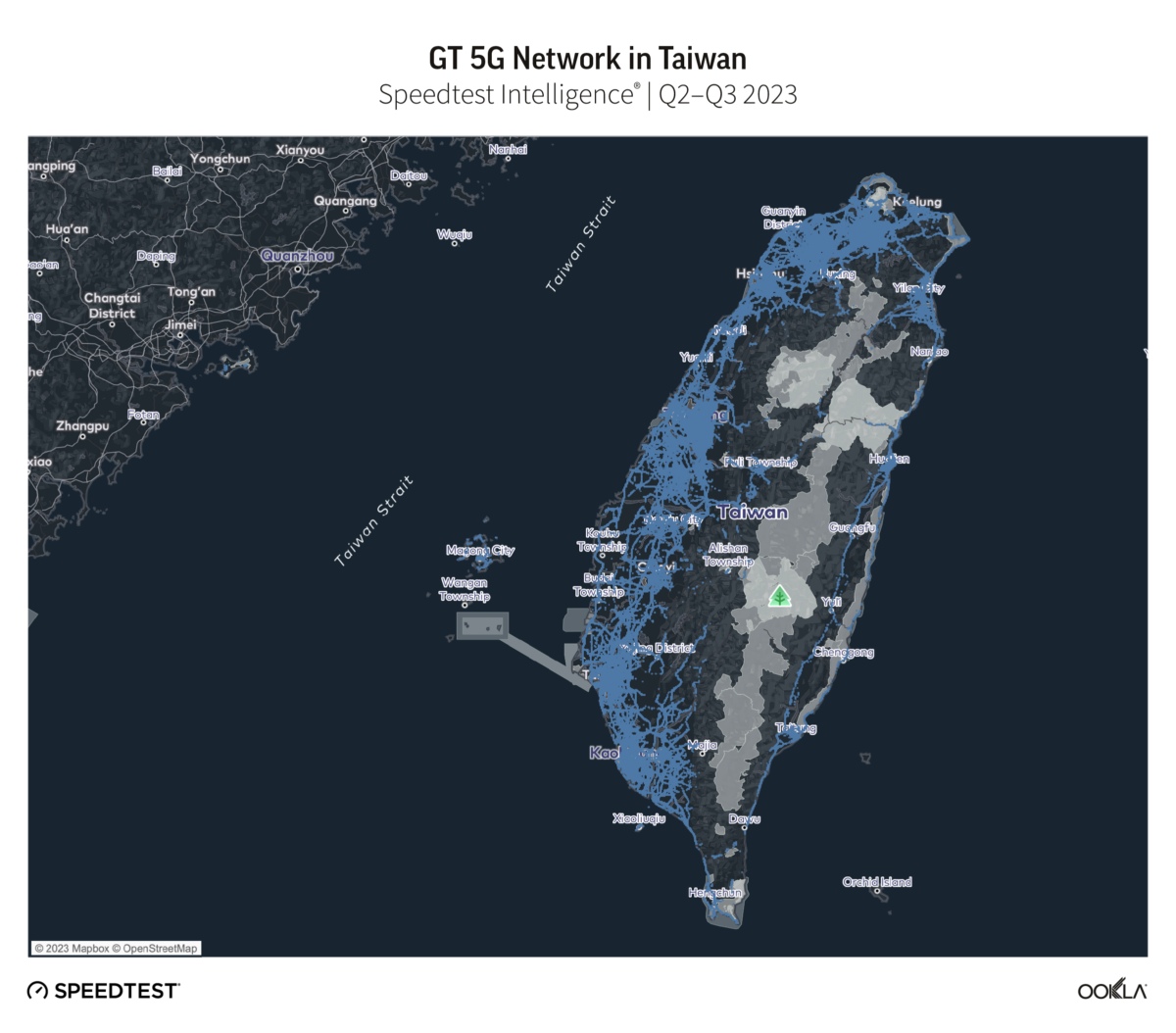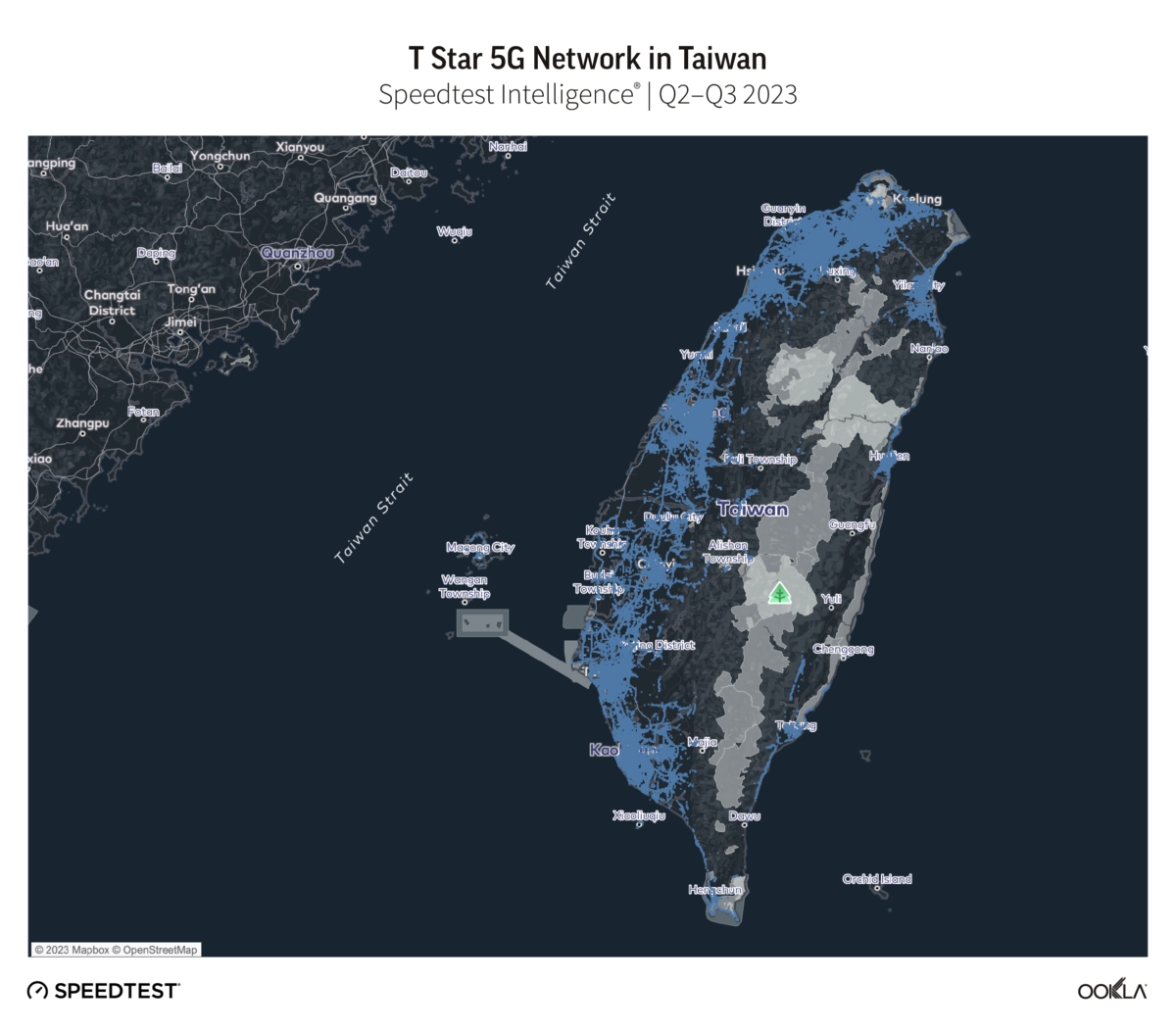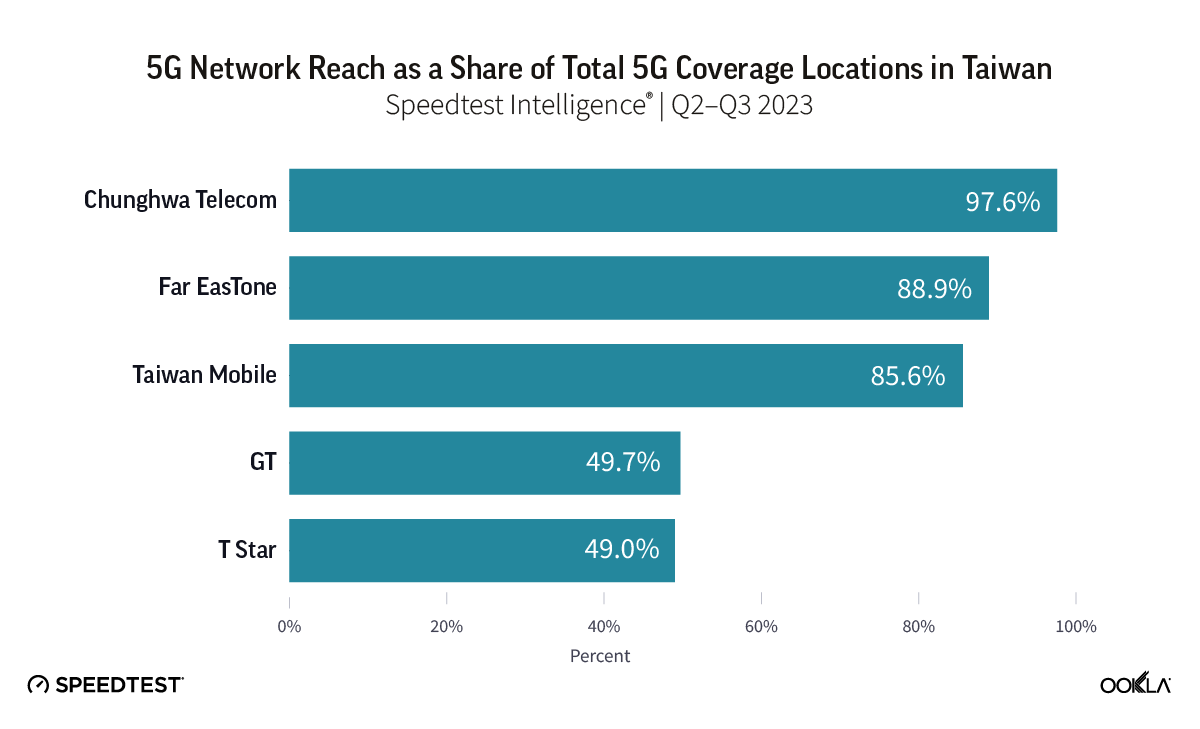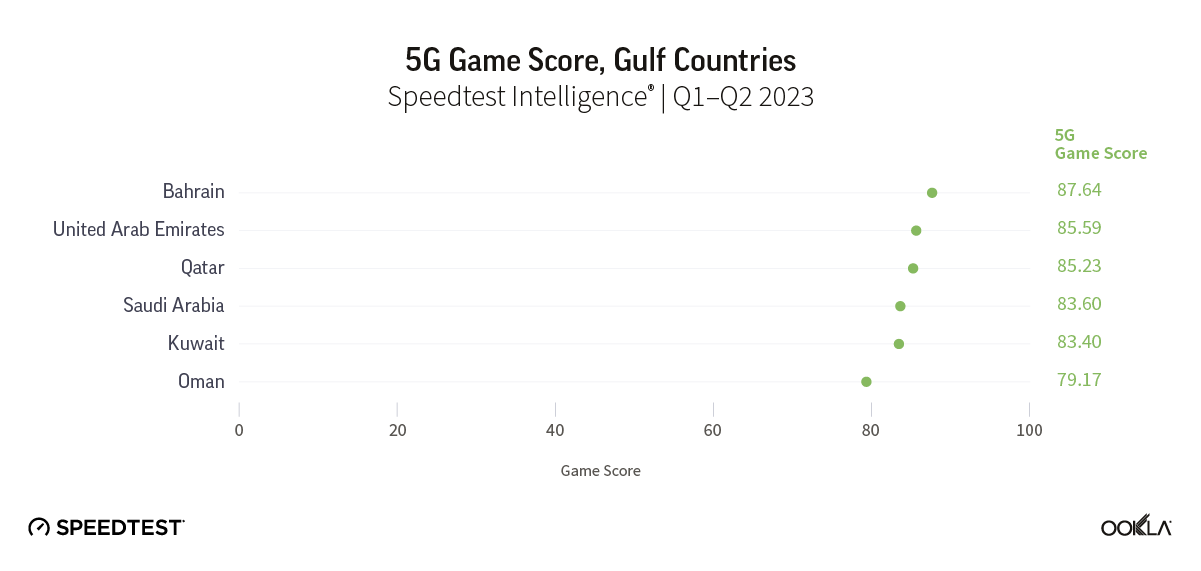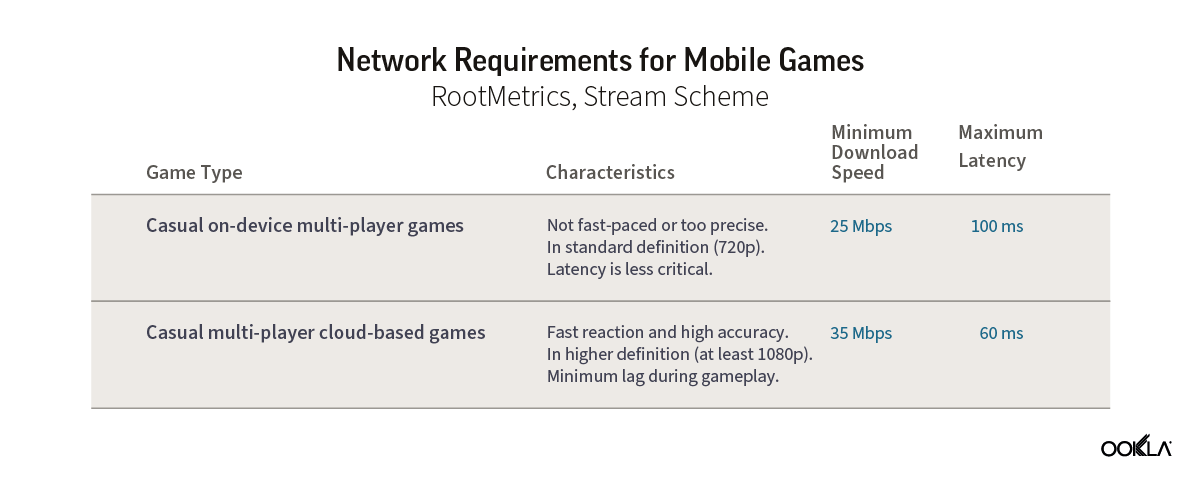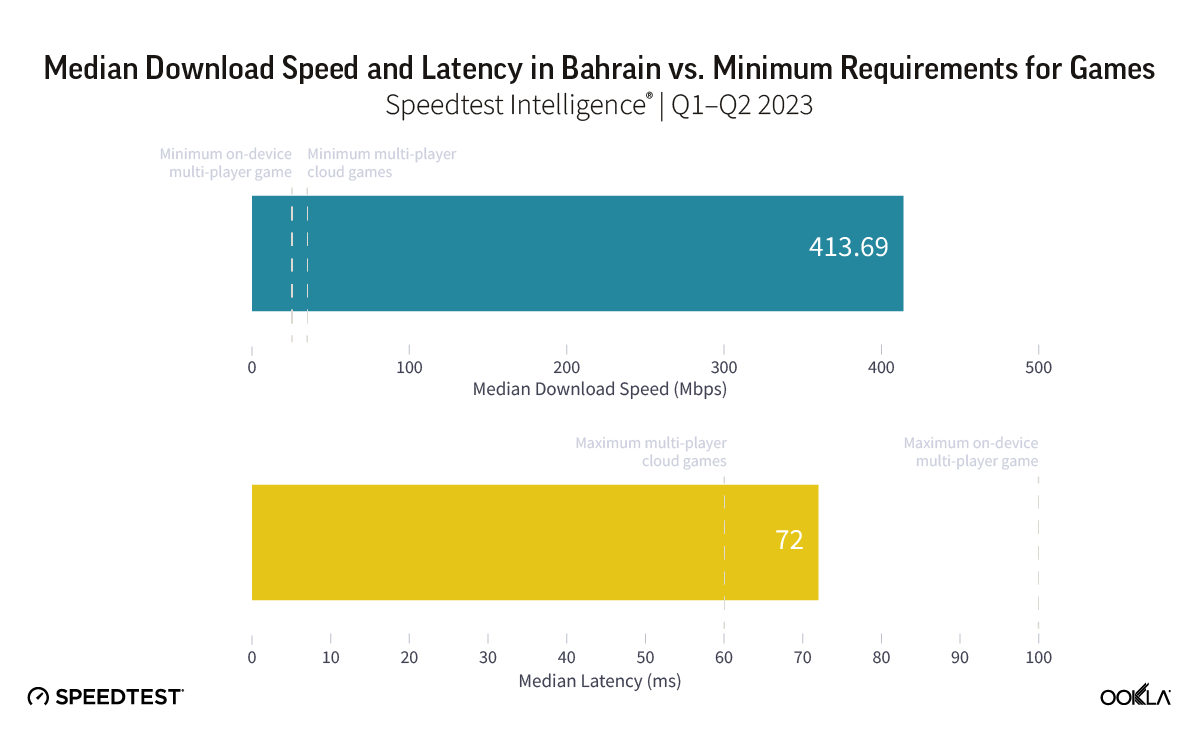The Asia Pacific region has successfully implemented 5G technology despite the challenges posed by the pandemic, global economy, and geopolitical climate. South Korea, China, and Japan have led the way in 5G network deployment. With the continued rollout of 5G networks in other regional markets, Asia Pacific is on track to become the largest 5G market globally.
Key messages
- Advanced Asia Pacific markets have taken the lead in the 5G rollout. Countries such as South Korea, Australia, and China, were among the first in the world to launch commercial 5G networks as more markets joined the ranks.
- 5G performance outranks Europe. Early adopters in the Asia Pacific region have outperformed major European markets in terms of 5G performance. This is mainly due to factors like early spectrum availability and supportive government policies.
- 5G Availability varies. The region experiences varying levels of 5G Availability and adoption due to factors like population density, device affordability, and tariffs.
- Seoul and Kuala Lumpur are the top cities for 5G performance, boasting median download speeds of 533.95 Mbps and 523.44 Mbps, respectively.
- 5G helps to narrow the digital divide. 5G FWA is a viable alternative to traditional fixed broadband to narrow down the digital divide in the region
South Korea sets the pace as 5G networks expand across the region
Many of the more advanced markets in the Asia Pacific have been the frontrunners in terms of 5G rollout. South Korea was the first market in the world to deploy a nationwide 5G network in April 2019, followed by Australia, the Philippines, China, and New Zealand later that year. As predicted by GSMA Intelligence, the recent second wave of 5G rollouts in the region in countries such as Indonesia, India, and Malaysia will see Asia Pacific becoming one of the largest 5G markets in the world by 2025.
Allocation of spectrum resources is crucial
In our recent spectrum analysis, we discussed how important spectrum is for the performance and coverage of 5G. In general, regulators in the Asia Pacific region have been quick to allocate spectrum for 5G applications, and in many cases, operators have been able to secure substantial bandwidth in the key C-band.
The mid-band spectrum is the most frequently awarded spectrum band in the Asia Pacific region. It is the top choice for commercial 5G deployment because it balances 5G coverage and capacity. In some markets, 5G deployment uses low-band (sub 1 GHz) frequencies, allowing for wider outdoor 5G coverage and better penetration inside buildings in urban and suburban areas. However, this may come at the expense of the median download speed, which typically peaks at around 100 Mbps.
For some markets, 5G spectrum awards are subject to strict milestones and requirements. Operators in South Korea were required to have 22,500 base stations by the end of 2021, 45,000 by the end of 2023, and 150,000 base stations upon completion of their 3.5 GHz spectrum rollout. Additionally, within three years, there were required to install 15,000 base stations utilizing 28 GHz. However, a review by South Korea’s Ministry of Science and ICT (MSIT) found that all mobile operators met the minimum requirements for the 3.5GHz spectrum but not the 28GHz spectrum. Consequently, the ministry has withdrawn all operators’ spectrum licenses in the 28GHz band. In our recent mmWave analysis, we thoroughly covered the performance and progress inherent in that spectrum band.
Asia Pacific outpaced major European markets in terms of 5G performance
While Europe and the Asia Pacific markets share similarities such as large cultural diversity, customers with varying demographics, and mixed regulations and policies, our recent analysis of European 5G performance revealed that early 5G adopters in the Asia Pacific region performed better than some major European markets.
According to Speedtest Intelligence® H1 2023 data, several markets in the Asia Pacific region had faster median download performance compared to the top five European economies. Malaysia and South Korea led the pack with speeds of over 500 Mbps, with Malaysia reporting a median download performance of 512.10 Mbps, and South Korea at 503.99 Mbps – an impressive accomplishment for Malaysia, which launched 5G 3.5 years after South Korea and has caught up to them in performance. Both countries have notable differences in terms of their telecommunications landscapes. The Malaysian government went with a nationwide single wholesale network (SWN) approach as its 5G deployment plan. Digital Nasional Berhad (DNB) was established in 2021 to construct and operate the 5G network infrastructure and provide 5G services to mobile network operators at wholesale prices. South Korea has long been at the forefront of mobile technology and boasts one of the highest internet penetration rates globally. As a result of its early commitment to 5G development, South Korea became the first market in the world to launch a commercial 5G network.
During the same period, Singapore, India, New Zealand, China, and Australia achieved a median 5G download speed exceeding 200 Mbps. In comparison, only France recorded speeds above 200 Mbps among the European countries mentioned, while Italy, Germany, United Kingdom, and Spain, recorded median download speeds below 150 Mbps.
5G Availability and adoption vary across the region
5G Availability (the percentage of users on 5G-capable devices that spend most of the time with access to 5G networks) varied widely across the Asia Pacific region during H1 2023. Factors such as access to low-band spectrum and affordability and availability of 5G devices influence each market’s reported 5G Availability. Analysis based on data from Speedtest Intelligence shows that Hong Kong stands out as the only country analyzed to have surpassed 40% 5G Availability, reaching 42.3% in H1 2023. Part of the reason is the city’s high population density, 5G coverage that reaches over 90% of the population, and a high 5G smartphone penetration rate, which Counterpoint Research reported as 78% in Q1 of 2023.
Despite Australia being 78 times larger than South Korea, and being one of the least densely populated countries, both countries reported similar 5G Availability rates, at around 36.6%. Counterpoint Research reported a 5G smartphone penetration rate of more than 80% for both countries, with South Korea at 88% and Australia at 82%. Across the European markets, France, Spain, Germany, and the U.K. ranged between 20%-30%. Similarly, Thailand also falls within this range at 26.8%.
Based on Q2 2023 data from GSMA Intelligence, South Korea, China, and Japan led in 5G adoption, measured as the percentage of 5G connections compared to total connections, higher than the selected European markets looked at in this report. South Korea had a total of 31.3 million 5G connections, which accounted for more than 48% of all mobile connections in the country, while China boasts over 700 million 5G connections, equivalent to 41% of connections. Other early adopters of 5G in the region, such as Japan, Hong Kong, and Australia, have all seen a considerable rise in their total 5G connections from the previous year. Japan experienced a 76% increase of 5G connections between Q2 2022 to Q2 2023, to 60.8 million connections. Hong Kong increased by 65% to 4.8 million, and Australia had 8.8 million connections, up by almost 40% during the same period of time.
Seoul and Kuala Lumpur are the top cities in the Asia Pacific region for 5G speeds.
Given that both Malaysia and South Korea are ahead in 5G performance among their peers, it is unsurprising that their capital cities came first as well in the ranking of selected cities. In H1 2023, Seoul had a median download speed of 533.95 Mbps, while Malaysia’s capital, Kuala Lumpur, reported a median download speed of 523.44 Mbps. Digital Nasional Berhad (DNB), Malaysia’s designated 5G wholesale provider, reported 90% 5G coverage of populated areas (COPA) throughout Kuala Lumpur at the end of 2022.
Despite being one of the latest markets to launch 5G, the Indian cities of Delhi and Mumbai performed well in the cities’ speeds ranking. Both cities reported median download speeds of over 300 Mbps in H1 2023, with Delhi at 357.43 Mbps and Mumbai at 319.45 Mbps. While Kuala Lumpur, Mumbai, and Delhi have shown 5G performance comparable to or even exceeding those of well-established 5G markets in the region, their 5G networks are still relatively new. As a result, these cities have lower 5G Availability than others as anticipated.
Metro Manila, with one-third of the population of the Philippines, had the lowest median download speed among all the cities in this report for H1 2023, with a speed of 135.51 Mbps. During the same period, Metro Manila reported a 5G availability rate of 35.7%, slightly lower than Seoul (35.9%) and Sydney (39.2%).
Breaking the digital divide with 5G FWA
The benefits of 5G go beyond the faster speeds compared to 4G. It also plays a role in bringing connectivity to underserved areas. Although developed markets in the Asia Pacific are leading in ultra-fast, fixed fiber broadband, there is still a portion of the region where internet connectivity is expensive, unavailable, or insufficient. Many people in these underserved regions rely on mobile devices to access the internet. According to GSMA Intelligence, mobile broadband networks are accessible to more than 96% of the population, making it the primary option for internet access in many households.
In some markets, mobile operators see 5G, particularly 5G fixed-wireless access (FWA) services, as a viable alternative to traditional fixed broadband. While FWA is not a new concept, the use of 5G technology is expected to accelerate its growth, especially in areas where it is not economically feasible to deploy high-speed fixed broadband networks. According to GSMA Intelligence, nearly three in five users who either have upgraded or plan to upgrade to 5G find the idea of using 5G for home broadband appealing. FWA is becoming one of the operators’ primary 5G use cases, providing an opportunity to increase revenue and monetize network investments and wireless spectrum.
The Asia-Pacific region is seeing a rise in the adoption of 5G FWA, with Southeast Asia leading the way. In 2019, Globe Telecom in the Philippines, became the first country in the region to launch FWA. Other regional operators, such as Telkomsel in Indonesia and AIS in Thailand, have also begun offering FWA services. In New Zealand, operators plan to provide FWA coverage to 90% of the population by the end of 2023.
While 5G FWA shows promising growth potential, operators need to ensure that as 5G adoption in the network increases, they have the capacity to support their FWA services and the spectrum to guarantee quality. When the demand for 5G FWA service grows, operators may have to look at utilizing the mmWave spectrum to maintain the quality of their FWA services while keeping network capacity intact.
We will keep a close eye on the progress and effectiveness of 5G implementation throughout the Asia Pacific region. If you are interested in benchmarking your performance or if you’d like to learn more about internet speeds and performance in other markets around the world, visit the Speedtest Global Index™.
Ookla retains ownership of this article including all of the intellectual property rights, data, content graphs and analysis. This article may not be quoted, reproduced, distributed or published for any commercial purpose without prior consent. Members of the press and others using the findings in this article for non-commercial purposes are welcome to publicly share and link to report information with attribution to Ookla.
